|
Week
ending 28th March:
RSPB Baron's Haugh ,
Strathclyde
Country Park Motherwell
I love the start of Spring as that is when the majority of wildflowers
and invertebrates start to re-appear after the long, cold Winter
months. This week I begin with listing all the emerging flowers
I’ve seen thus far at Barons Haugh. There were masses of Few-flowered
Leek plants lining the paths and riverbanks with
only a few of them showing their drooping white flowers. Also, the
small white flowers of Barren Strawberry could be seen along the
west-facing banks of the path. And in damp, shaded areas I found
creeping matts of Opposite-leaved Golden Saxifrage, a wildflower which
has no petals, only eight stamens. At the path edges of Chestnut Walk I
noticed the tiny green flowers of Moschatel .
This wildflower is also known at Town Hall Clock. I was also pleased to
see the quite dramatic-looking spikes of Butterbur. These flowers
appear before their leaves and will soon die back and be replaced with
very large leaves that will dominate the area.
| Few - flowered Leek |
Barren Strawberry |
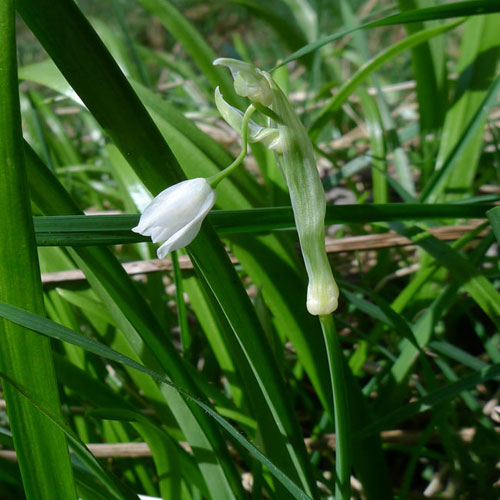 |
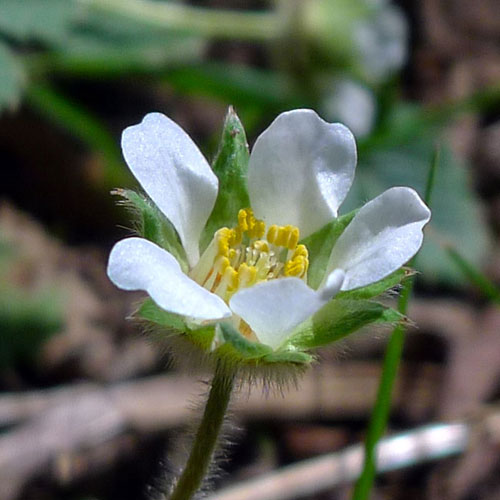 |
| Opposite - leaved
Golden Saxifrage |
Butterbur |
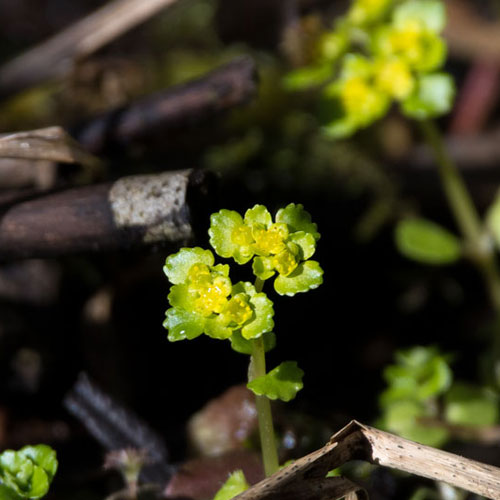 |
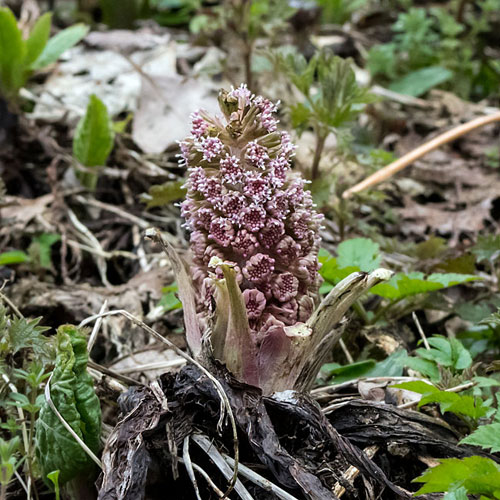 |
A single Wood
Anemone flower was the first of what will soon be
large patches of this spring regular. From a few breaking buds last
week, this week there were lots of fully formed Daffodils across the
reserve. Snowdrops, on the other hand, were beginning to fade. Gorse
bushes, which flower throughout the year, were showing increasing
numbers of fresh, yellow flowers.
| Wood Anemone |
Daffodil |
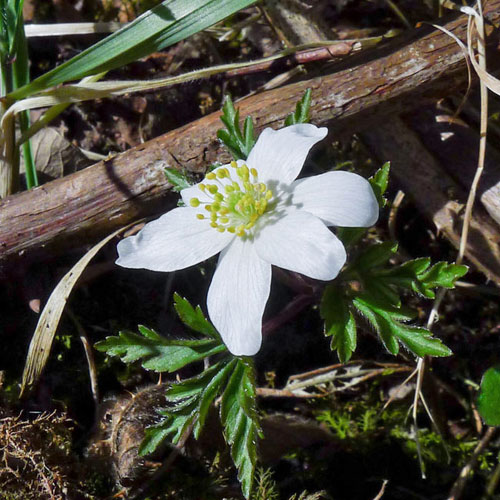 |
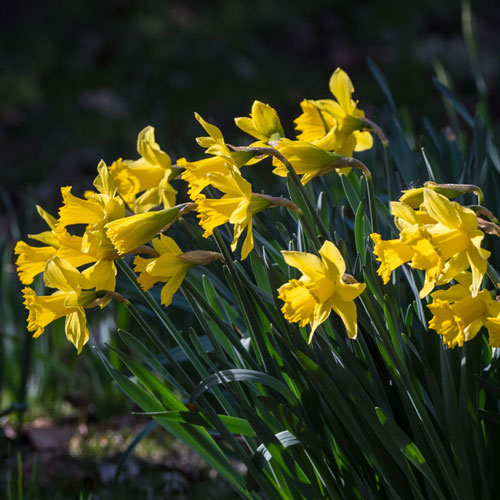 |
| Common Snowdrop |
Gorse |
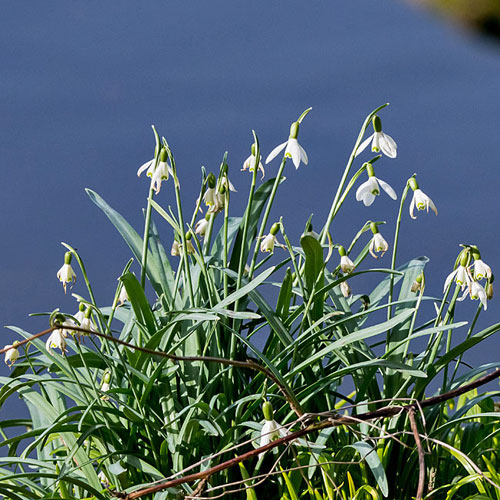 |
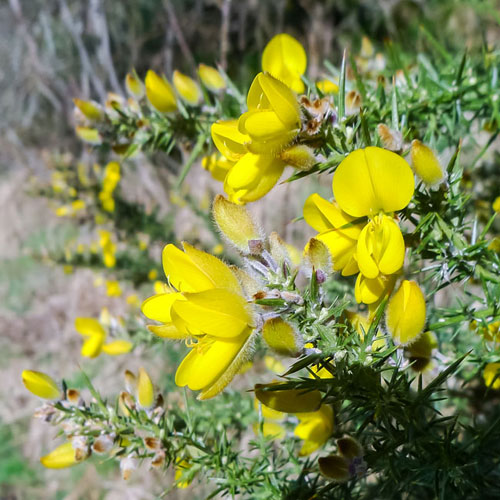 |
I also photographed a few insects. A Hawthorn Mining Bee,
Andrena scotica , was resting on a mossy stump.
There were many large, solitary bumblebees searching the nooks and
crannies for suitable nesting sites. The one shown below is a Red-tailed
Bumblebee . My first butterfly of the year was a Small
Tortoiseshell which flew in from the Clyde and
landed on grass well with the range of my camera lens.
| Hawthorn Mining Bee |
Red - tailed
Bumblebee |
Small Tortoiseshell Butterfly |
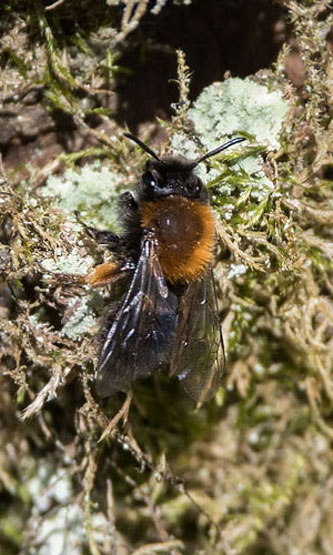 |
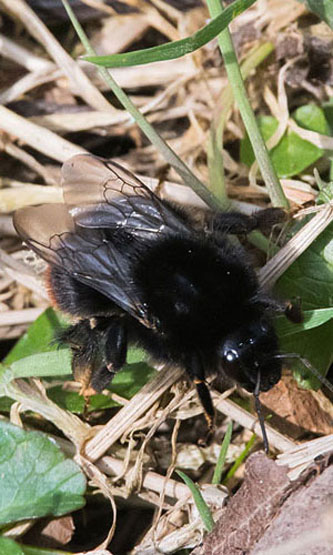 |
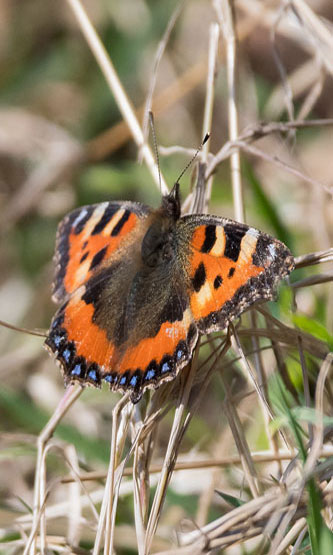 |
Of course, as always, I kept a eye on the birds. As I started my walk I
couldn’t fail to hear a Nuthatch calling as it foraged on the
high tree branches not far from the car park. Near it was a big
Woodpigeon, bolder than usual as I passed beneath it. I made my way
along Chestnut Walk and onto the path along the River Clyde. Unusually,
there were a few Oystercatchers on the far banks of the river and near
them were a few Goosanders in the water.
| Nuthatch |
Wood Pigeon |
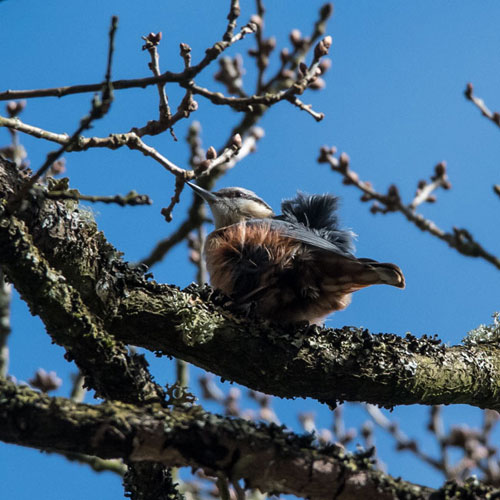 |
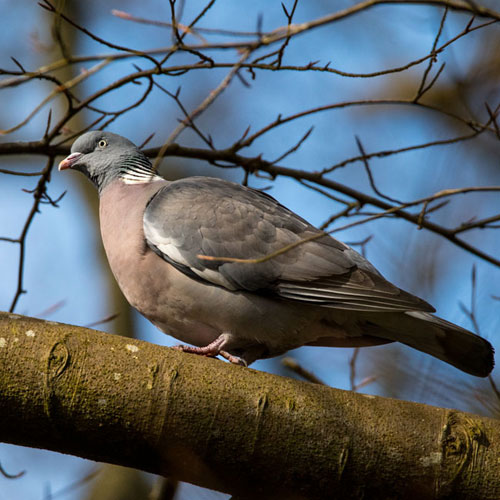 |
| Oystercatcher |
Goosander |
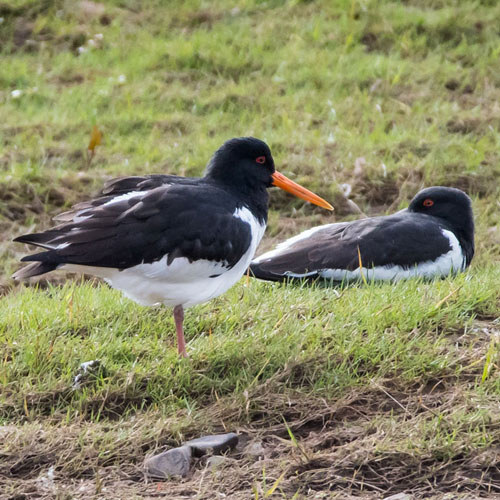 |
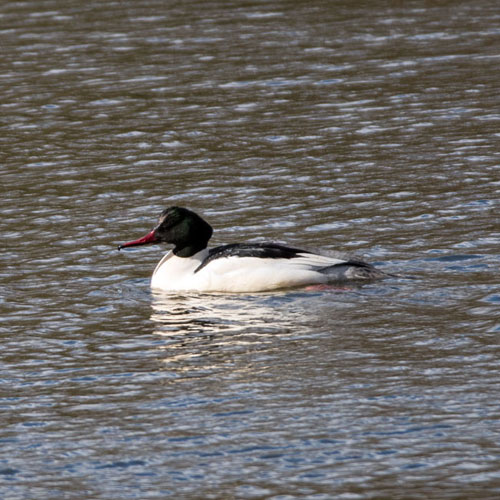 |
On Thursday I made the best of some gloomy weather with a pleasant walk
in Strathclyde Country Park, in the woods behind
M&D’s. The Hairy
Bittercress , a footpath “weed”,
were flowering. The rasping call of a Greenfinch drew me to the public
car park near the toilet block. I got a pleasing shot despite the poor
light. I was also pleased to see the first flowers of a much ignored,
but very pretty wildflower, the Common Daisy. In the woods I
encountered an equally pretty fungus, a particularly large example of
Scarlet Elf Cup, and also Artist’s Fungus. This bracket
fungus is perhaps not at pretty as the Elf Cup, but is striking
nevertheless.
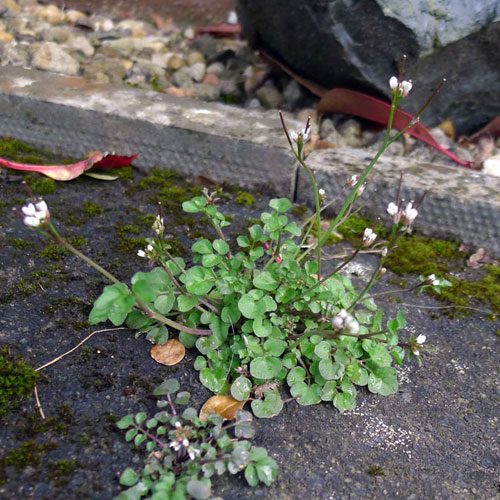 |
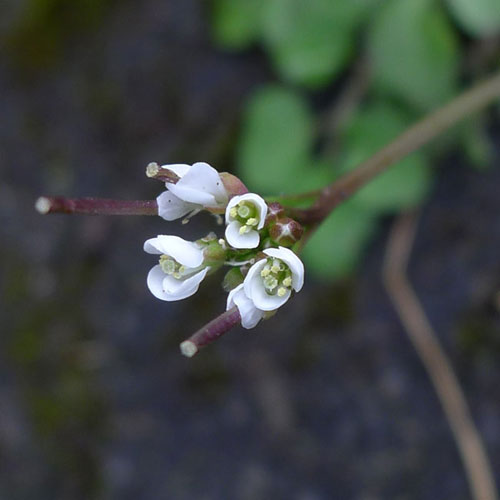 |
| Greenfinch |
Common Daisy |
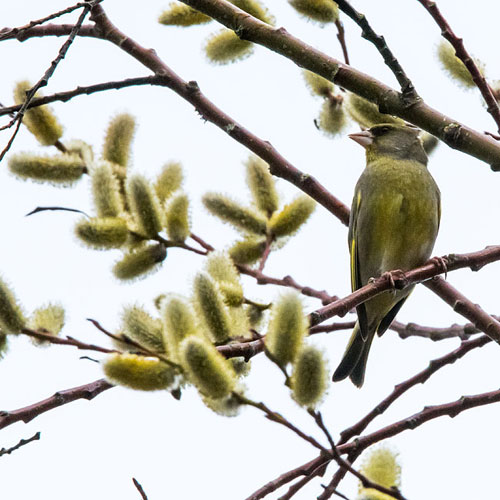 |
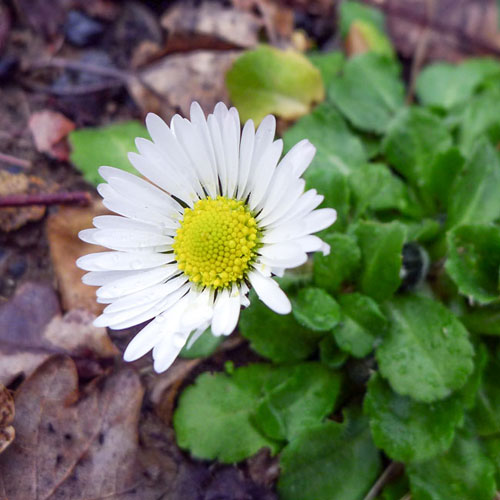 |
| Scarlet Elf Cup |
Artist's Fungus |
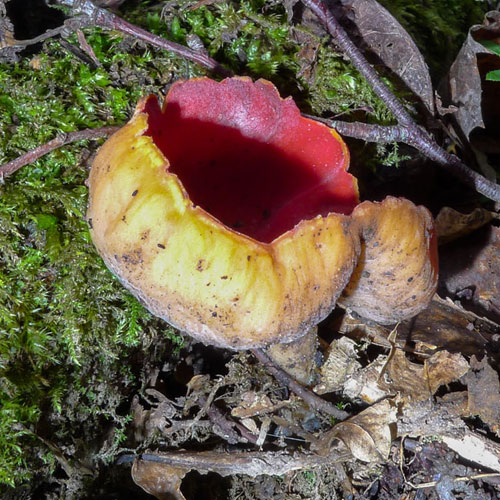 |
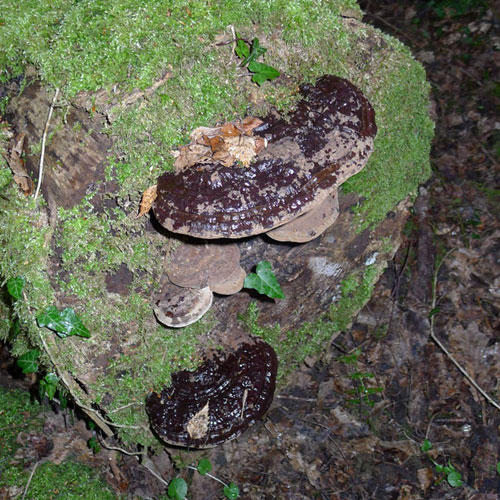 |
Saturday was the best day of the week. I spent an hour or so at the
north end of Strathclyde Country Park. My visit started at the head of
the Loch where I spotted four Meadow Pipits on the grassy area at the
rowing starting area. It was the first time I’d seen Pipits
in the Park and I assume they were in transit. The other birds there
were “regulars” - Canada and Greylag Geese and
Carrion Crows. Fishermen at the water’s edge had scared off
the water birds.
| Meadow Pipit |
Canada Goose |
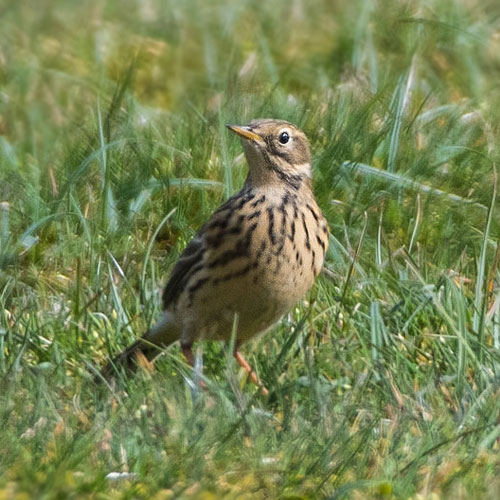 |
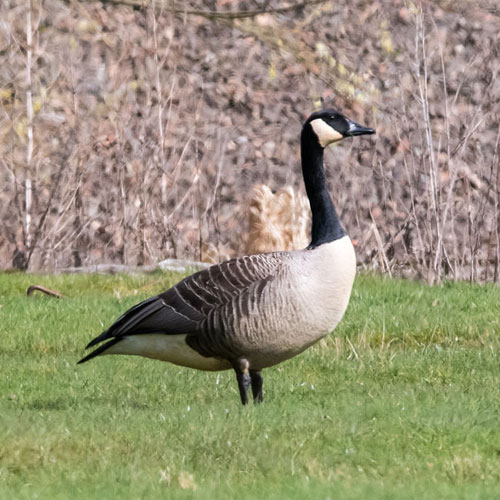 |
| Greylag Goose |
Carrion Crow |
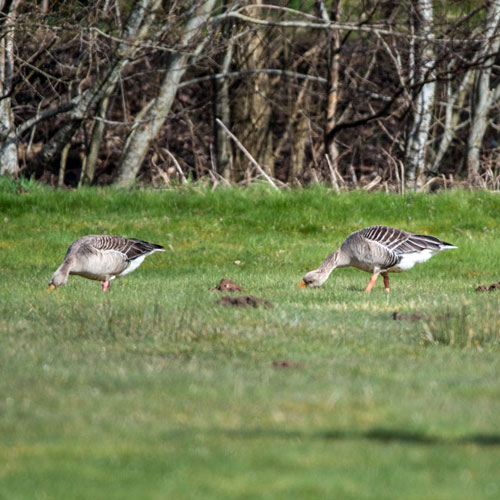 |
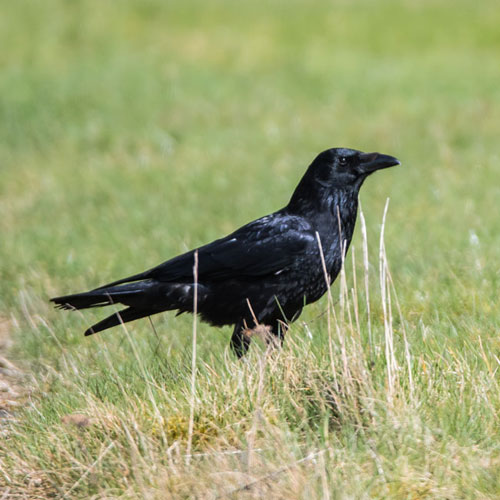 |
Next I returned to the “out-of-use” car park just
south of the Theme Park where I knew there were a variety of
passerines. I snapped Mr and Mrs Chaffinch and Mr and Mrs Blackbird and
also a posing Robin. I also came across a Groundsel plant that
wasn’t just blooming, it had seeded.
| Chaffinch |
Female Chaffinch |
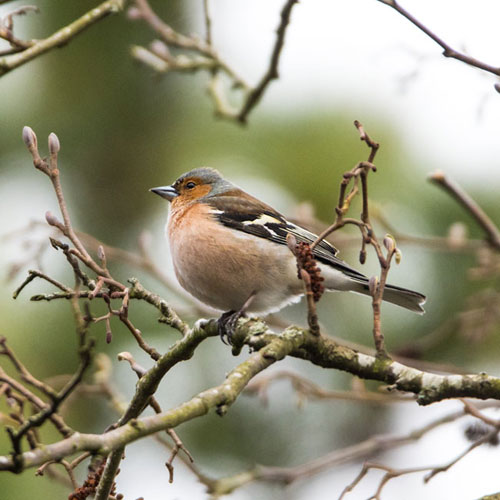 |
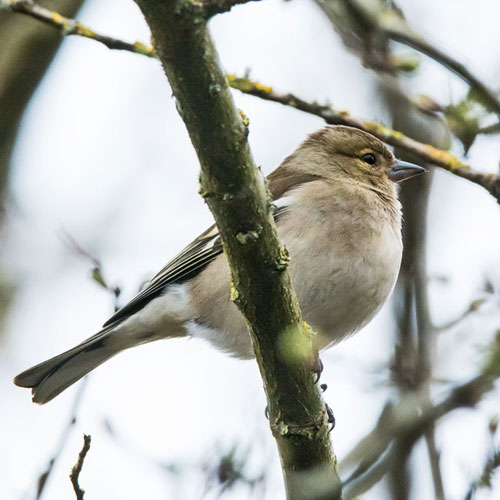 |
| Blackbird |
Female Blackbird |
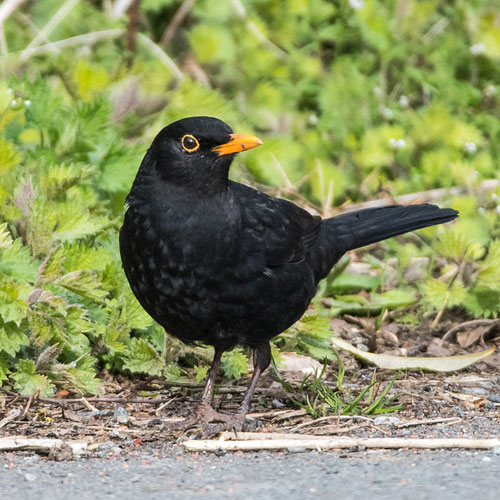 |
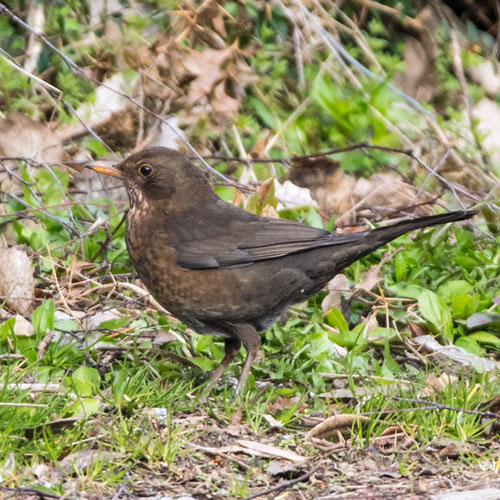 |
| Robin |
Common Groundsel |
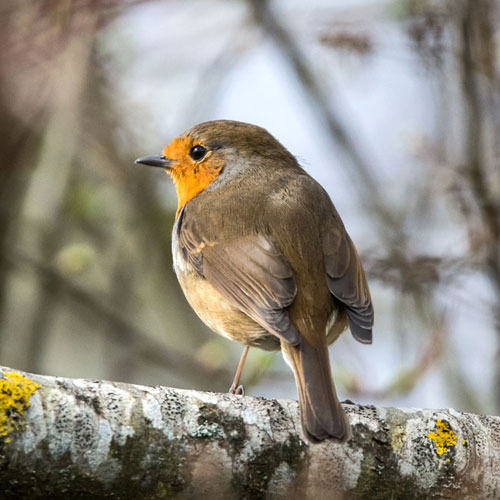 |
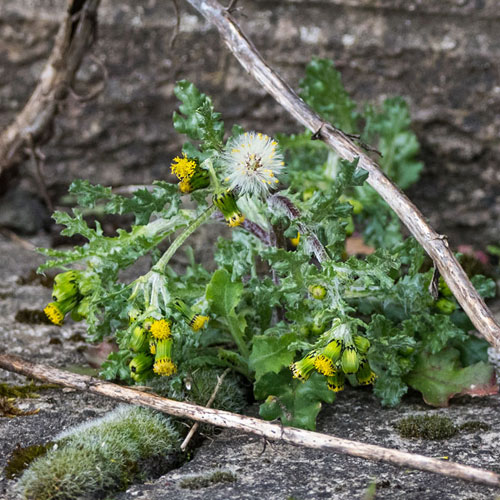 |
On a rough path from the car park I noticed an unusual fungus, Frothy
Porecrust, on a rotting tree stump, a newby for us. I walked to the
woods east of the Bothwellhaugh football pitches and was fortunate
enough to have an eye-to-eye encounter with a Roe Deer. I stood still
and fired off a few camera shots while the deer casually trotted away.
A queen Buff-tailed
Bumblebee flew about the grassy tufts at the base
of some trees.
| Frothy Porecrust
Fungus |
Queen Buff - tailed
Bumblebee |
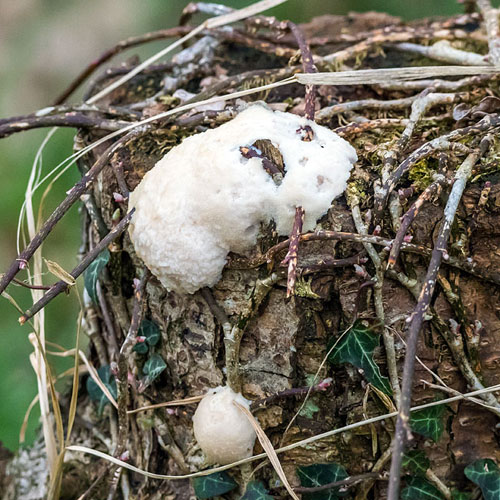 |
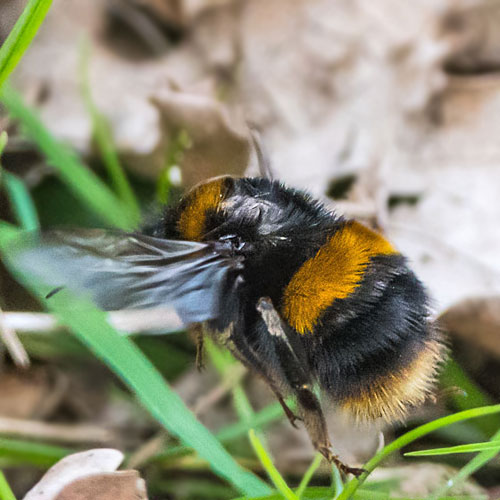 |
I finished my trip with a visit to the wooded area that sits between
the football pitches and the M74. Those woods are usually quite good
for wildflowers. There were lovely yellow Primroses and not so lovely Dog’s
Mercury .
In the garden of the bungalow I noticed patches of Wood Anemones were
almost in full bloom. My last shots were of another plant that flowers
before its leaves show, Coltsfoot,
so-named due to its leaves having the shape of (you’ve
guessed it) the hoof mark of a small horse.
| Primrose |
Dog's Mercury |
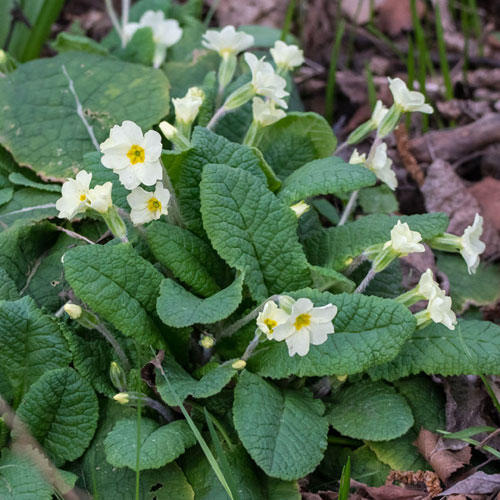 |
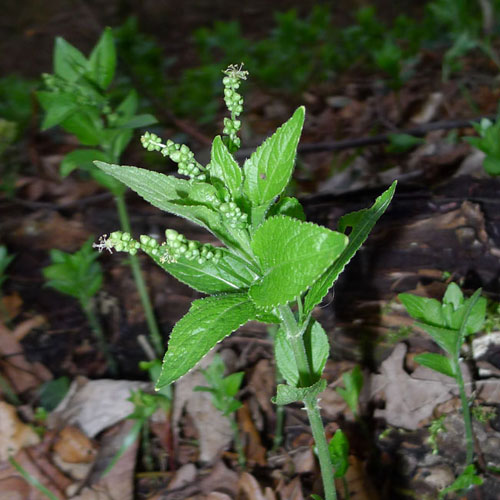 |
| Wood Anemone |
Coltsfoot |
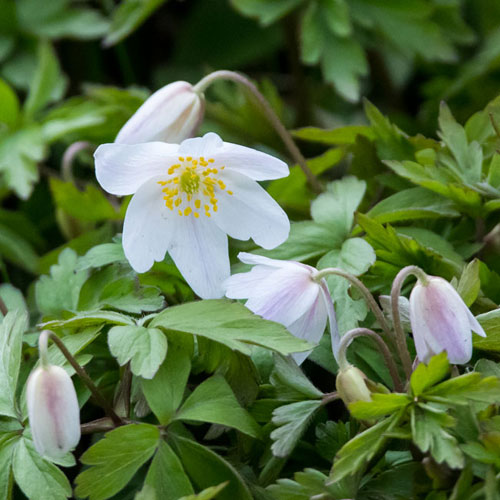 |
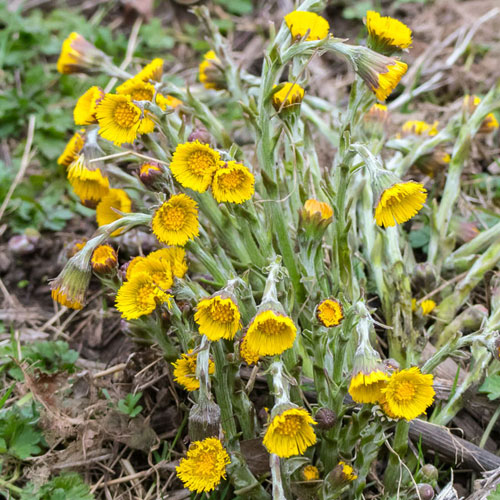 |
Week ending 21st March 2021: Baron's
Haugh Motherwell
This week I’ve visited RSPB Barons Haugh on six days.
I’ve arranged my pictures according to location. The weather
each day was just how I like it, bright, sunny, not too cold and not
too hot. On the path down from the car park towards the Marsh Hide I
was alerted by a walker that there were Common
Frogs and Toads adjacent to the fenced fields.
Presumably they were moving from the small burn at the top of the hill
down towards the Haugh. At the Marsh Hide I was disappointed to find
that the water level was still on the high side so waders and dabblers
were unlikely to be be present. I did however see a few Teal and a pair
of Moorhens. On Wednesday I also managed a fairly close glimpse of a
female Roe
Deer as I exited the Marsh Hide.
| Common Frog |
Common Toad |
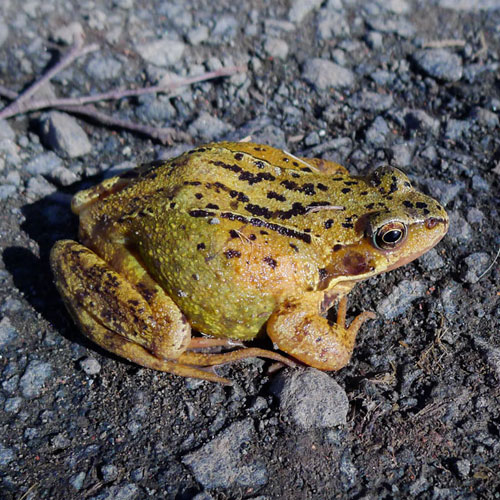 |
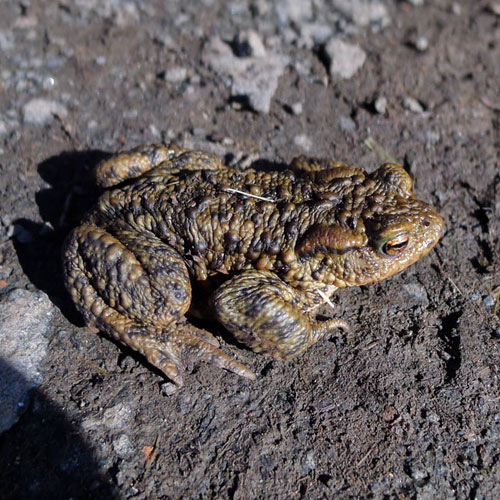 |
| Drake Teal |
Female Teal |
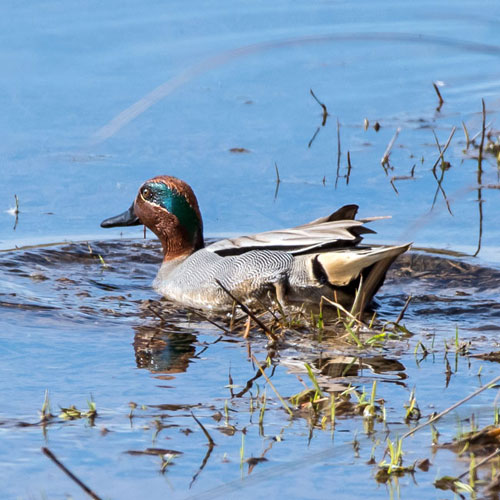 |
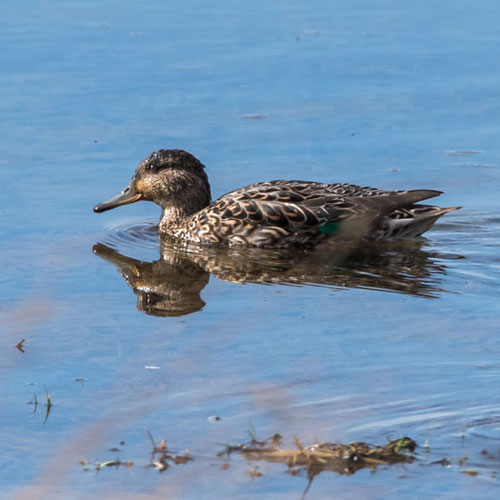 |
| Moorhen |
Female Roe Deer |
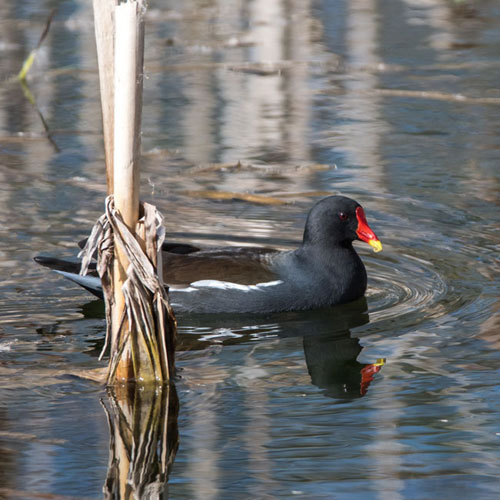 |
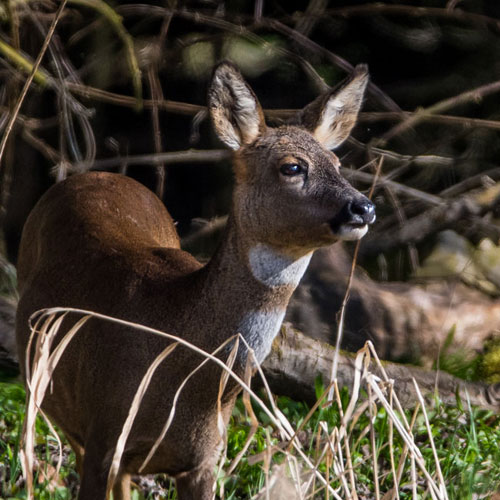 |
On another day the same doe lead her fawns across the waters of the
Haugh.
It was a similar story at the Causeway Hide. Only a few Mute Swans
and Teal were close to the Hide, although there were some distant
Mallards, Gadwall and Goldeneye. As I emerged from the actual causeway
to face the fields I photographed foraging Corvids
- Magpies, Jackdaws and CarrionCrows.
| Mute Swan |
Teal |
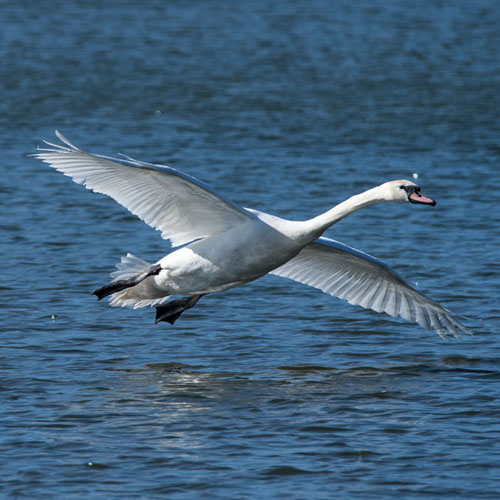 |
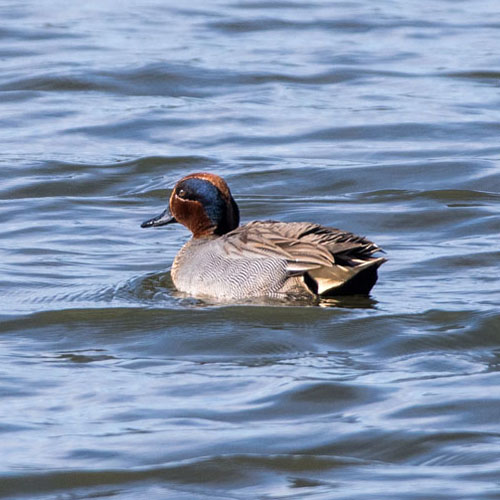 |
| Jackdaw |
Carrion Crow |
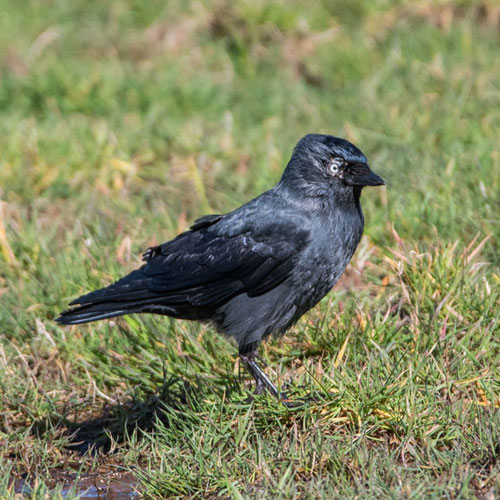 |
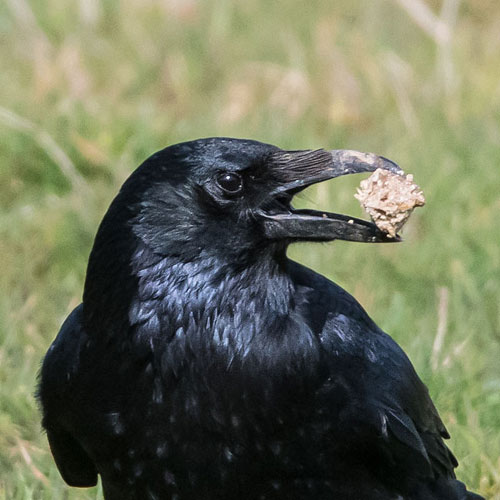 |
The picture below, taken from the Phoenix Hide, shows a pair of showy
Mute Swans gliding across the Haugh in very fine light.
On Tuesday I saw a pair of Gadwalls
pass in front of the hide but little else throughout the week. From the
Centenary Hide I managed a record shot of distant Shelduck, one of a
pair, showing also some Curlew.
Pleasingly, the Shelducks
took flight across the Haugh, presenting a fine photo-opportunity as
they passed in front of the Causeway Hide. And, as a bonus, a pair of
Grey Herons passed about 40m from the Hide.
| Gadwall |
Curlew |
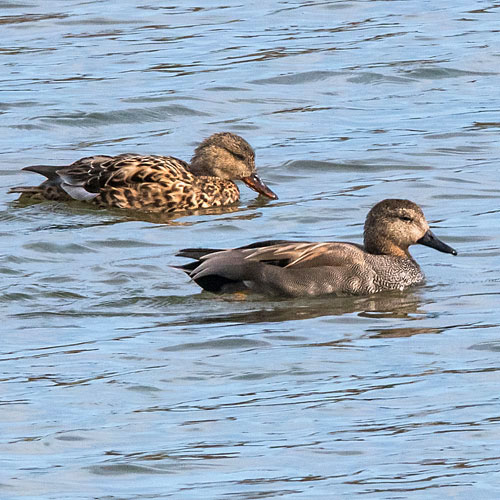 |
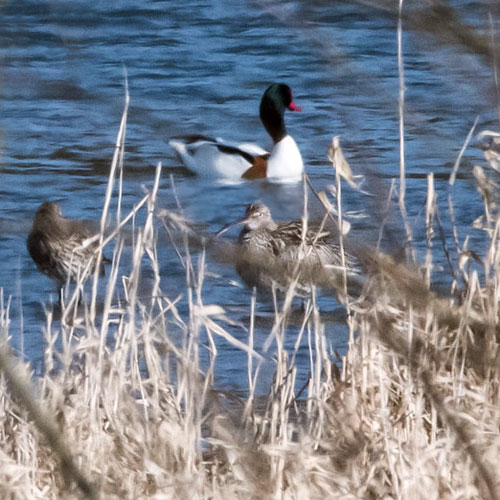 |
| Shelduck |
Grey Heron |
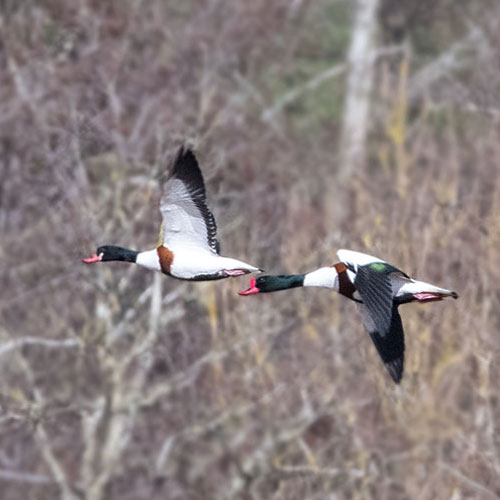 |
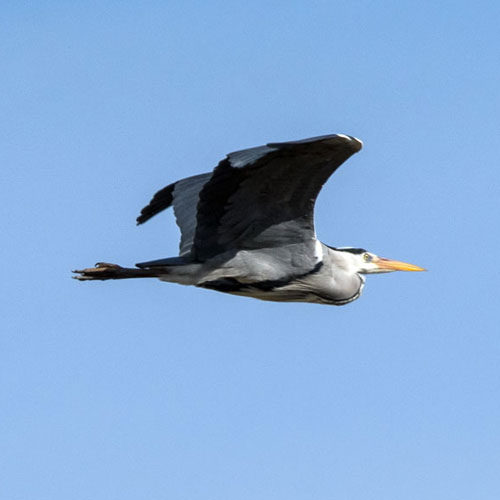 |
One passing birder commented to me that the Haugh was very quiet and
most of her sightings were seen from the paths. I agreed. In fact my
favourite shot of the week was of a Peregrine
Falcon. (I must however keep the location a secret since the
bird appeared to be preparing a nest, and, being what you might call a
“popular” bird, knowledge of it’s
whereabouts could bring in the crowds and scare away the pair). In the
most recently landscaped part of the Haugh, just before the Chestnut
Walk, I got a pleasant shot of a Grey Heron lurking in some long grass.
And in the flood-damaged gateway to that area a very noisy,
nest-building Wren was making repeated trips across the gap carry
nesting material in its beak. I completed my trio of shots there with a
very accommodating and well-lit Robin.
| Peregrine Falcon |
Grey Heron |
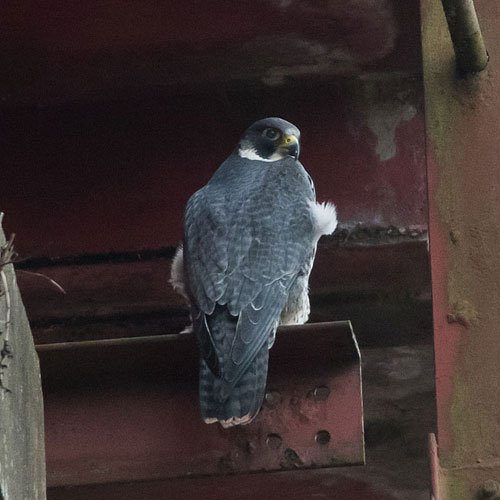 |
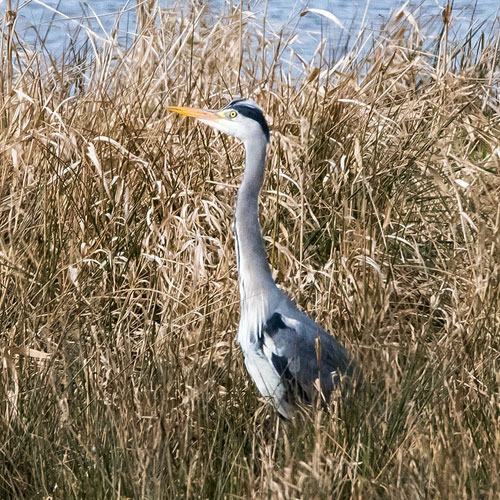 |
| Wren |
Robin |
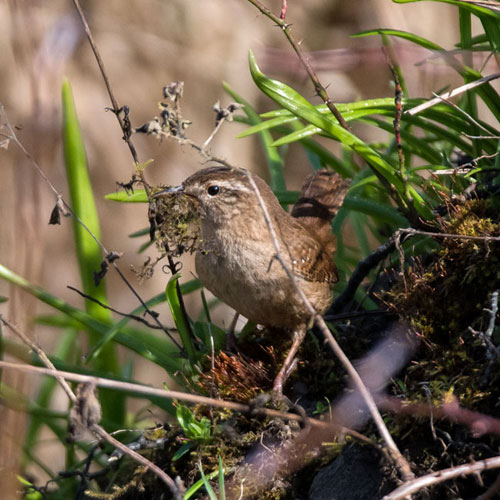 |
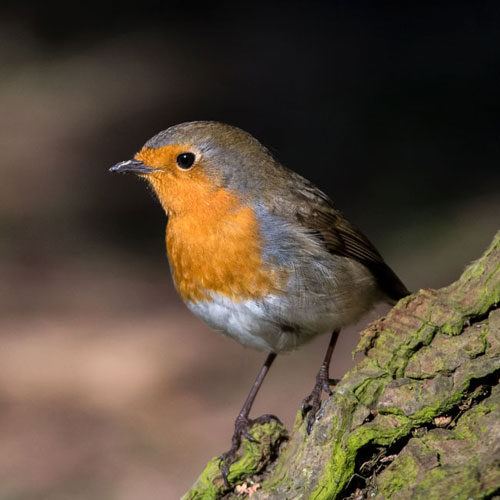 |
With the dearth of birds on the Haugh I hoped that there would be
richer pickings from the paths, and, as you will see below, that proved
to be the case. All of the pictures that follow were taken on or close
to the path that follows the course of the River Clyde from the
Chestnut Walk to the northern boundary of the RSPB reserve at the
railway viaduct. I saw a variety of birds. These will soon to become
more difficult to photograph as the trees fill with leaves. I was
pleased to catch sight of a Treecreeper low on the trunk of a riverside
tree, although it stayed on the shaded side of the tree. In the woods
just before the viaduct I caught a very pleasing shot of a Goldcrest
catching a spider. I also photographed Long-tailed, Blue, Great and
Coal Tits. There were also Goldfinches and Chaffinches
| Treecreeper |
Goldcrest |
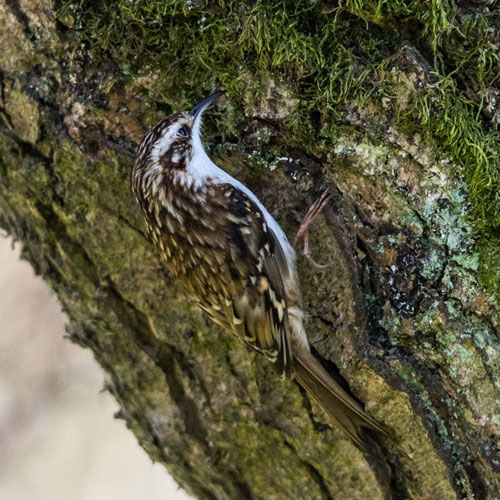 |
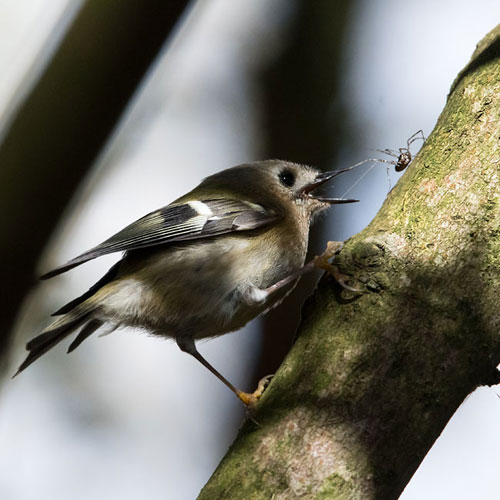 |
| Long - tailed Tit |
Blue Tit |
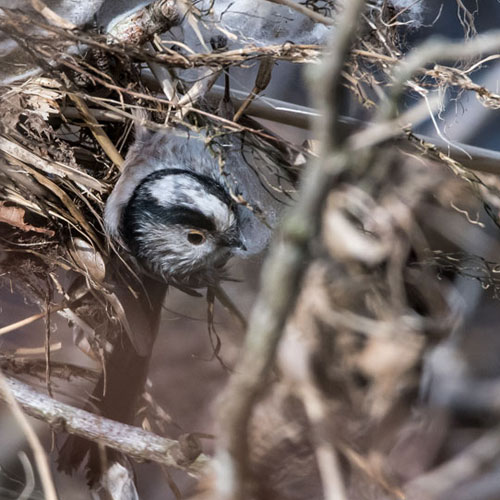 |
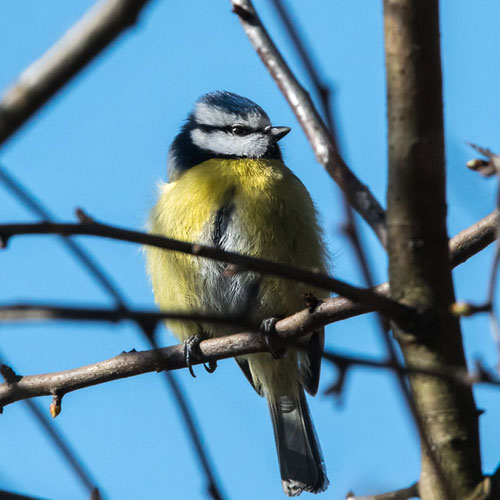 |
| Coal Tit |
Great Tit |
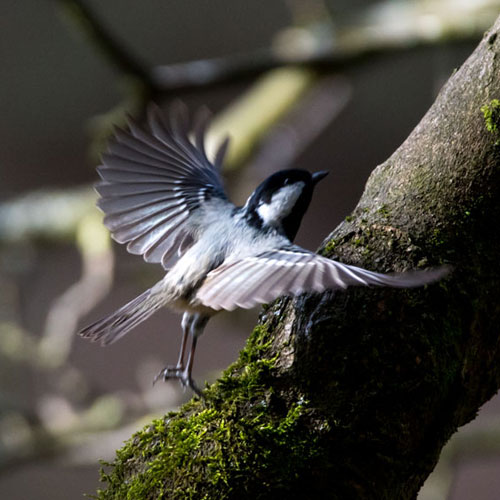 |
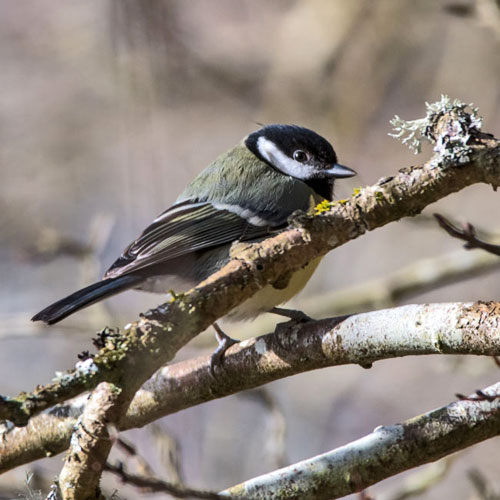 |
| Goldfinch |
Chaffinch |
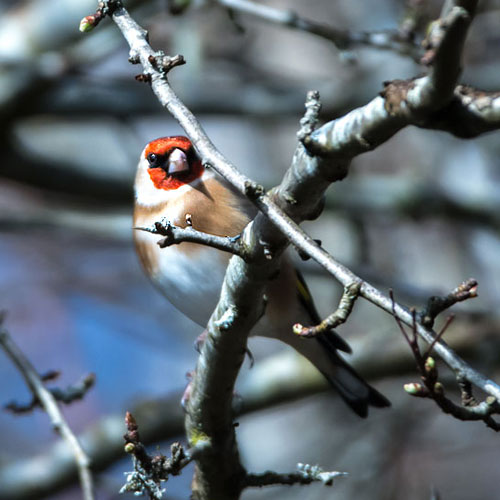 |
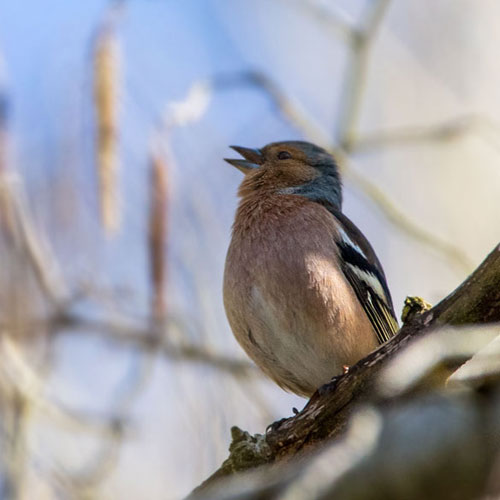 |
There were also birds on on the Clyde. I got snaps of adult and
juvenile male Goldeneyes and, from a distance, I watched a pair of
mating Mute Swans, a glorious and moving sight.
| Juvenile
Male Goldeneye |
Drake Goldeneye |
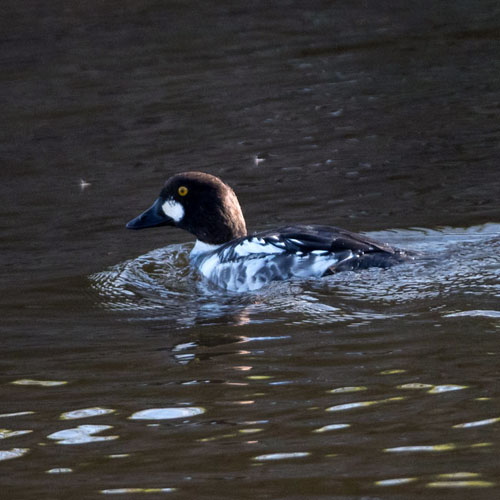 |
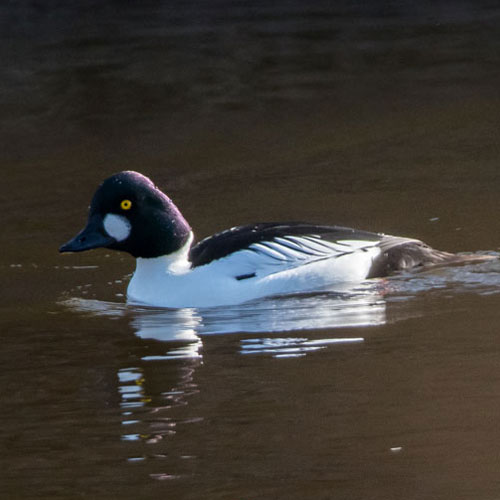 |
Week ending 14th March 2021: Strathclyde Park Motherwell
The start of the week was wild, wet and windy so I kept my camera in
its bag until the sun came out to play on Thursday. From car park 4 I
was pleased to see the big juvenile Iceland
Gull turn up along with the Black-headed, Common
Gulls and Herring
Gulls when bread was thrown.
| 1st Cycle Iceland
Gull |
Black - headed Gull |
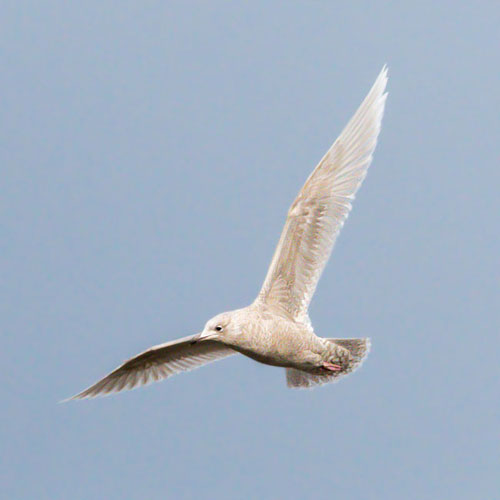 |
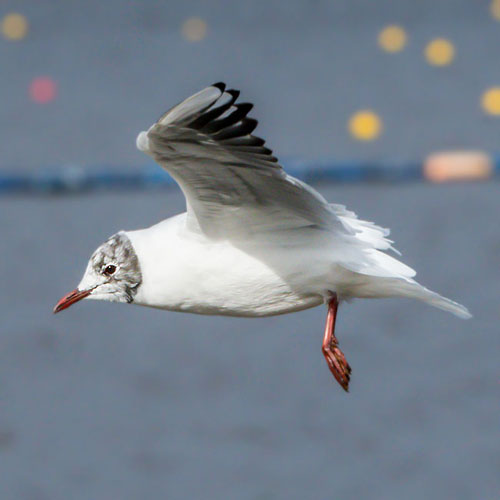 |
| 1st Cycle
Black - headed Gull |
Common Gull |
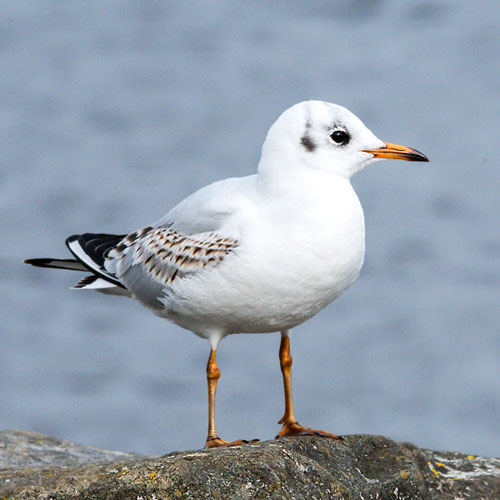 |
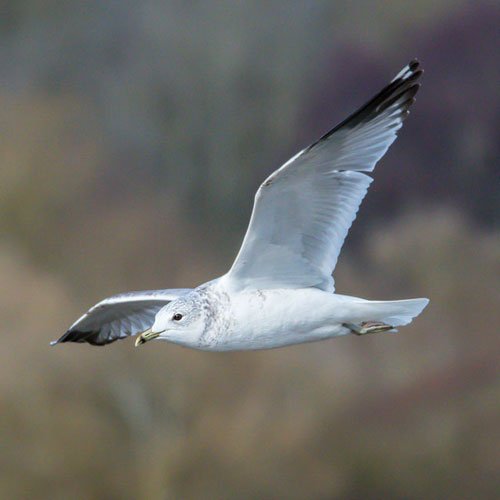 |
| 1st Cycle Herring
Gull |
Greylag Goose |
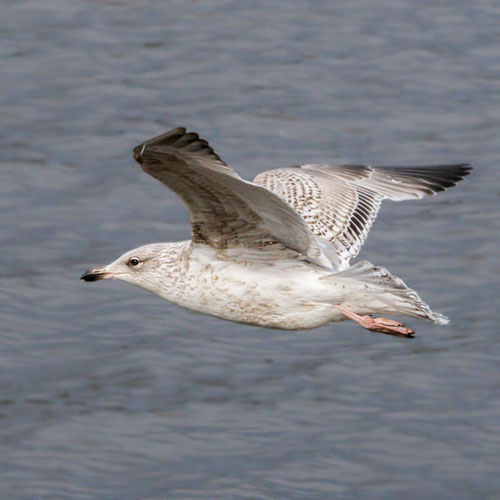 |
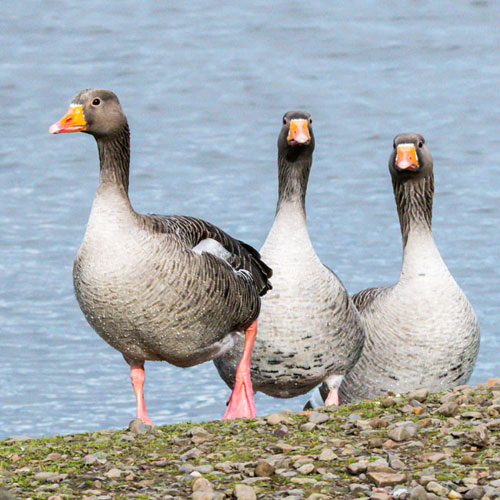 |
A few Lesser Black-backed Gulls were also in the mix, as were the
Jackdaws, ever ready to clean up the crumbs.
| Lesser
Black - backed Gull |
Jackdaw |
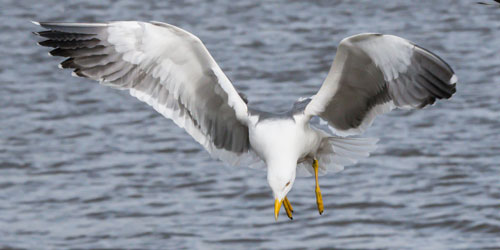 |
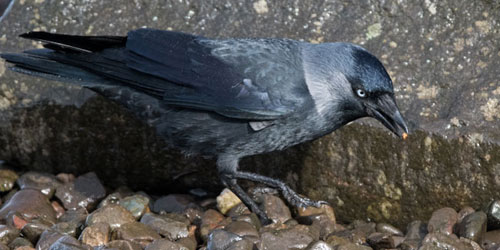 |
The following day I started at the mouth of the South Calder river. In
the area where there is a litter boom across the river I got some
unexpected shots of a wee serenading Robin. On the grass there were
Carrion Crows, but I noticed that there were a pair of Grey
Wagtails actually on the floating litter, searching
for invertebrates.
| Greylag Goose |
Carrion Crow |
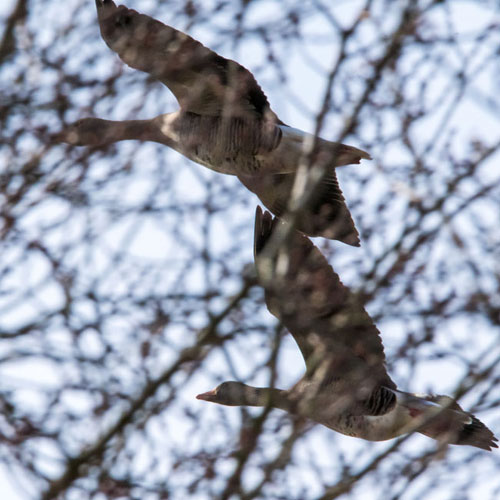 |
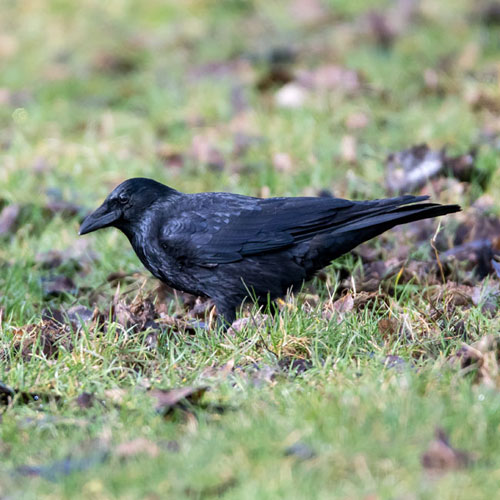 |
As I crossed the road bridge by the Roman Bridge, I got nice shots of a
very vocal Robin
in full voice as it sat high in a young tree. And near the ruin of the
Roman Bathhouse another very accommodating Robin allowed me to
photograph it as it perched at head level in the path-side hedges.
My next brief encounter was further along the path with a female Bullfinch
, and, near it, a family of Long-tailed
Tits flitting rapidly from branch to branch. I next
took the quiet path that took me along the edge of the woods behind
M&D’s Theme Park where I saw some Woodpigeons on
grassy fields. A Treecreeper
probing the bark of a large tree by the path into the woods.
| Female Bullfinch |
Long - tailed Tit |
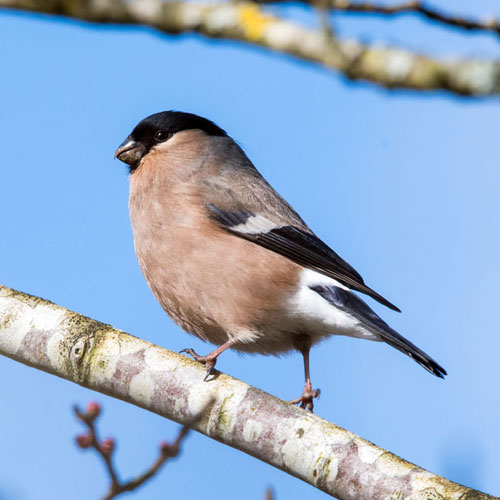 |
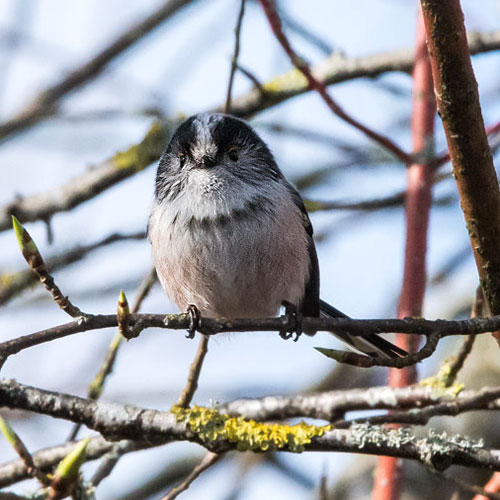 |
| Wood Pigeon |
Treecreeper |
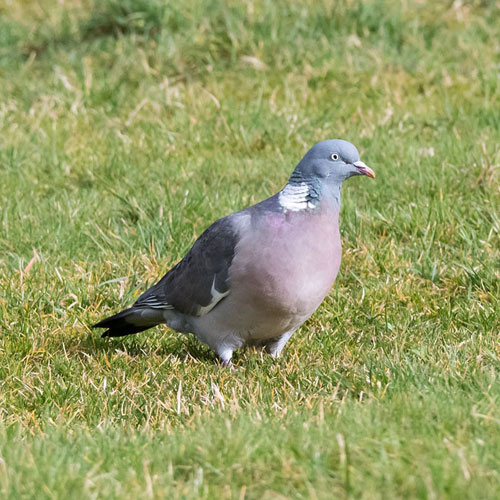 |
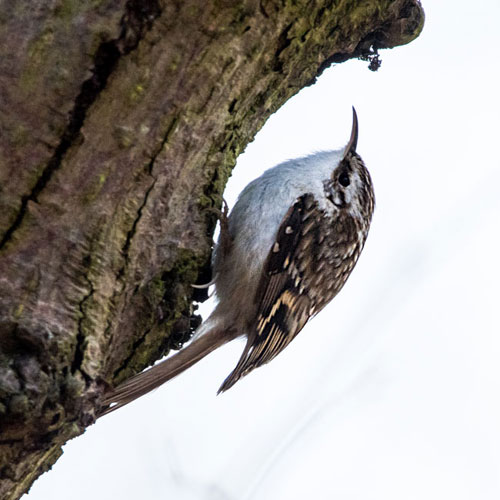 |
On the trail I was delighted to see more flowers in bloom. Spring had
sprung. There were the yellow Lesser Celandine in the banks lining the
path. Some of those were being dwarfed by the masses of planted
Daffodils who’s buds were now starting to bloom. There were
still patches of Snowdrops around the edges of the woods and I also saw
the delightfully-named Opposite-leaved Golden
Saxifrage spreading on the damp, shaded floor.
Scarlet Elf Cup fungi were still dotted around the fallen mossy timber.
My final shot of the day was of a Carrion Crow possibly telling me to
get back to my car as there was a sharp shower moving in. I took its
advice.
| Lesser Celandine |
Daffodil |
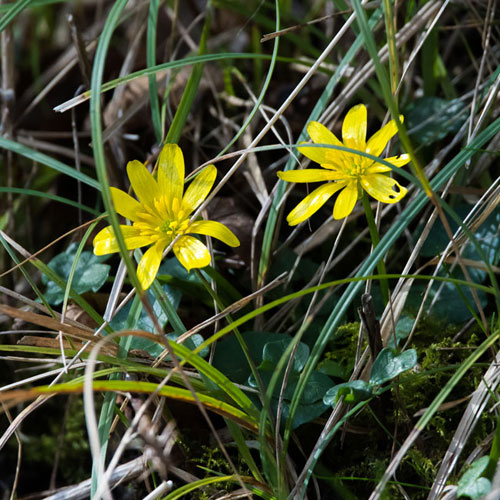 |
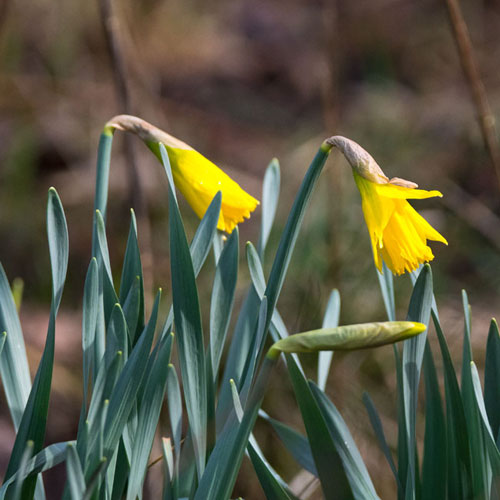 |
| Common Snowdrop |
Opposite - leaved
Golden Saxifrage |
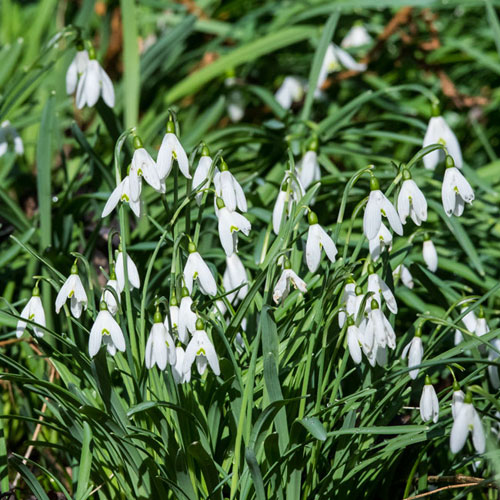 |
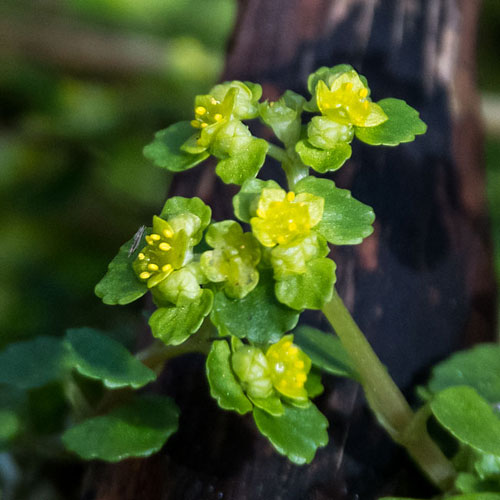 |
The weather was brighter when I visited the Park on Saturday. I always
enjoy photographing drake Mallards when the sun is shining, since the
iridescence of their plumage is very beautiful. The females less so. I
also enjoy photographing flying Black-headed Gulls, another common,
underrated bird whose plumage is very attractive. The Greylags are also
very photogenic, especially when they stretch their wings.
| Drake Mallard |
Female Mallard |
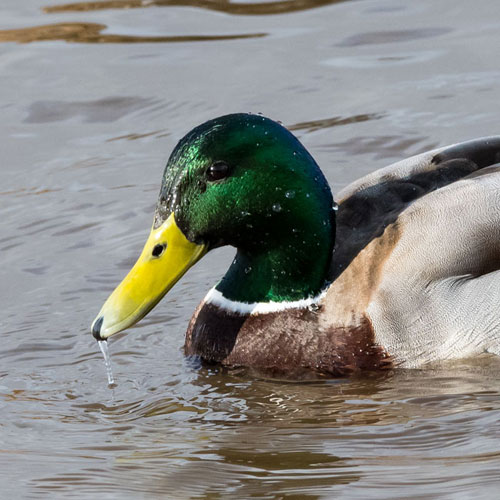 |
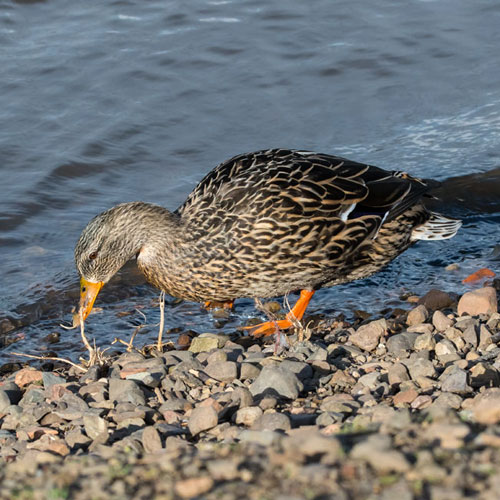 |
| 1st Cycle
Black - headed Gull |
Greylag Goose |
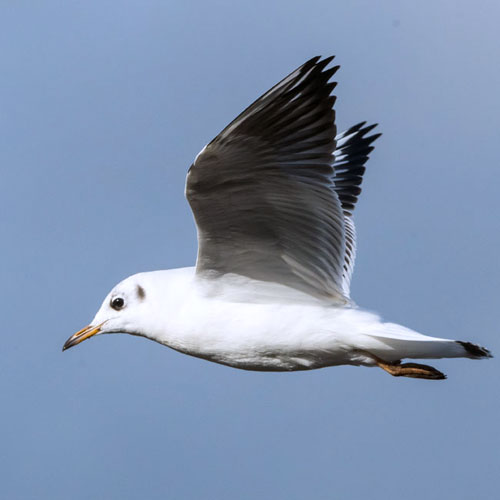 |
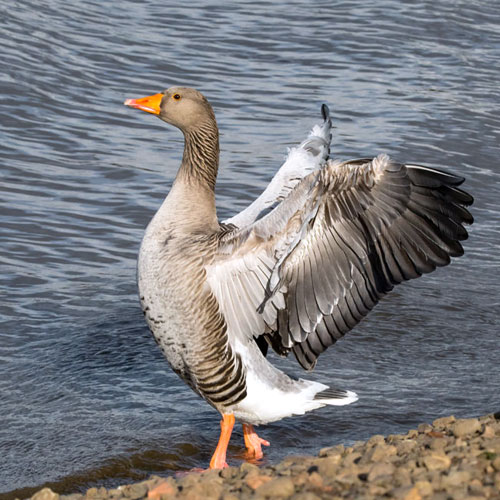 |
Mute Swans also do a fair bit of wing stretching, as shown below, by a
cygnet just coming into adulthood. Next I watched the Black-headed and
Common Gulls jostling for position on the pontoons at the
Watersport’s Centre. There were also Lesser Black-backed
Gulls, now that winter has passed, showing beautifully neat breeding
plumage. I got a nice shot of a pair of Jackdaws, two of the many that
were patrolling to shoreline looking for feeding opportunities.
I finished with a cute picture of a Mallard X Muscovy Duck hybrid
quacking as it paddled some 5 metres from the shore. How it came to be
there is a mystery.
Week ending 7th March 2021: Dalzell
Estate, Baron's
Haugh, Jim's Garden, Strathclyde Park
Monday: RSPB Barons Haugh, Motherwell
It was a fairly nice morning as I started my walk, moving north from
Chestnut Walk. I noticed a pair of Goosanders on the new ponds adjacent
to the Walk. This is encouraging since there have been few birds in
there until now. Next I was serenaded by a Robin that was on top of a
hedge. That was to be my first of several Robin sightings. On the far
side of the river, partially silhouetted by the low sun, a pair of Mute
Swans were dabbling their way slowly upstream. And as I watched them I
became aware of a rather pensive-looking Robin minding its own business
on a riverside bush.
| Goosander |
Robin |
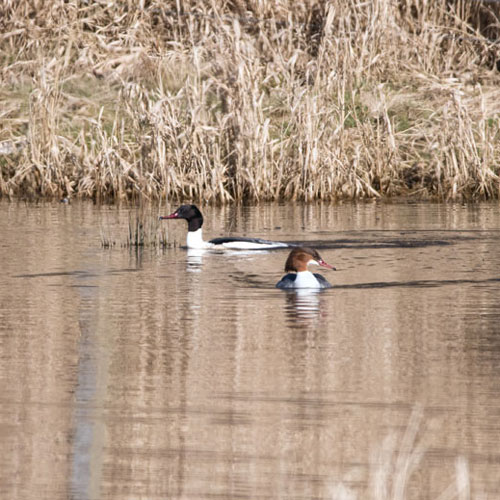 |
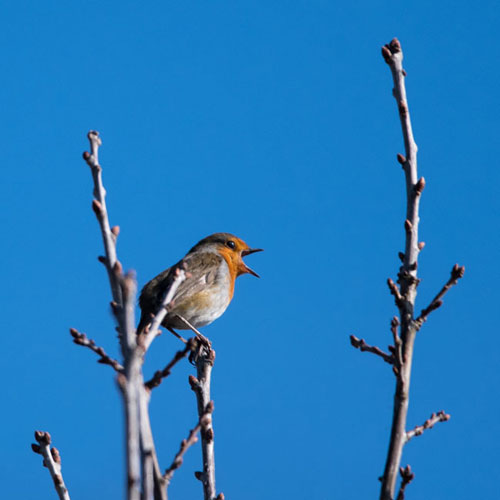 |
| Mute Swan |
Robin |
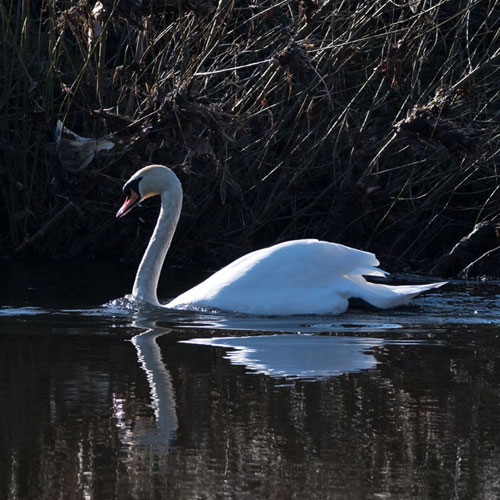 |
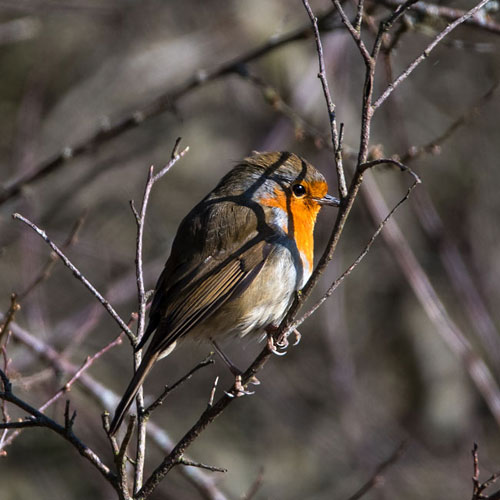 |
As I strolled northwards along the footpath I heard the high-pitched
calls of Goldcrests emanating from the hedgerow. Just as I started
trying to locate them, a pair of calling Ravens
passed overhead. After a short wait I eventually managed a couple of
decent shots of a Goldcrest
as it moved up a tree trunk. Further along the path I snapped a bonny
wee Great Tit that was resting on a low tree branch. Nearby I noticed
more yellow flowers of Lesser
Celandine . In a week or two’s time the
banks will be covered by their yellow blooms.
| Raven |
Goldcrest |
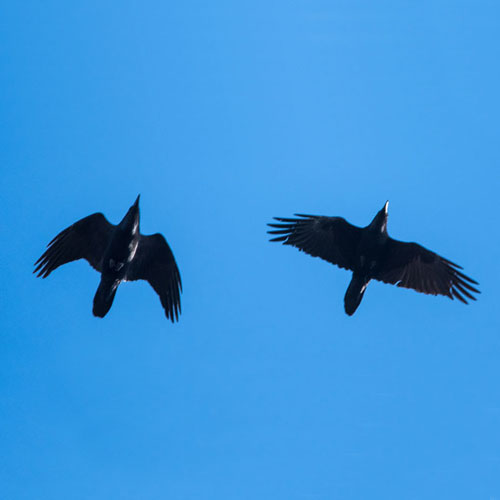 |
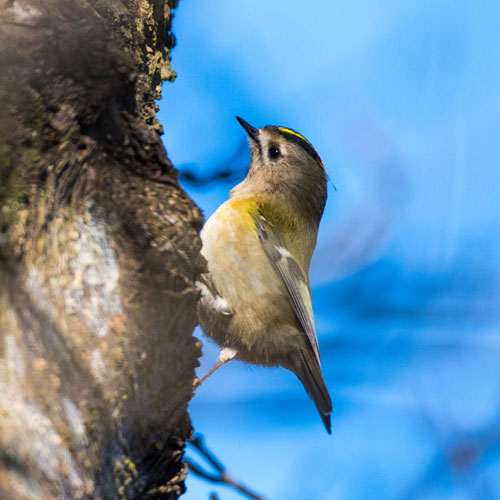 |
| Great Tit |
Lesser Celandine |
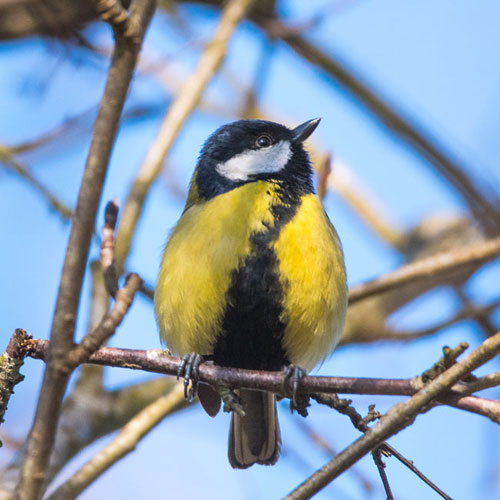 |
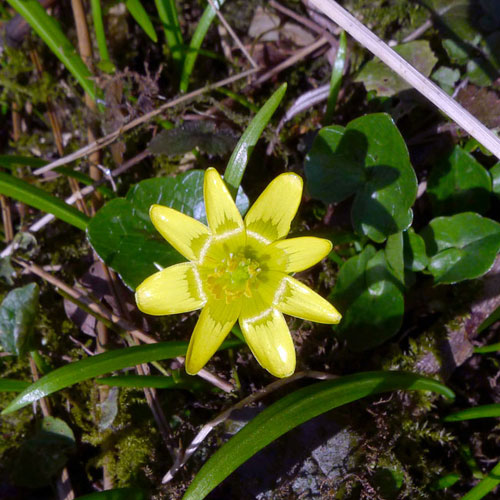 |
I sat by the riverside for 10 minutes and photographed two fly-pasts, a
Goosander and then a Goldeneye.
| Female Goosander |
Goldeneye |
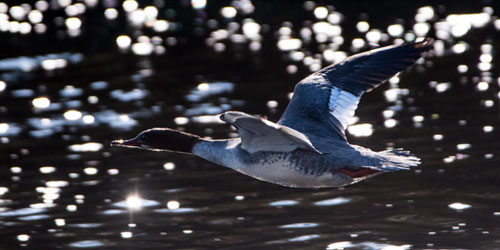 |
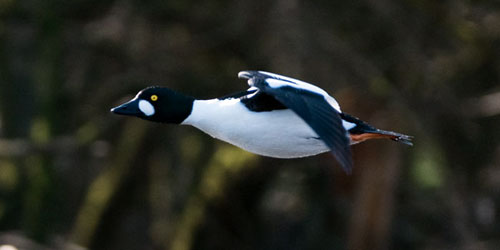 |
On my way back to the car I passed a male Bullfinch crunching seeds on
a bush. At the start of Chestnut Walk I managed to see a Blue Tit
foraging on a mossy tree trunk, followed by a Treecreeper on
the same tree. I also snapped a shot of the fungus, Blushing
Bracket.
| Bullfinch |
Blue Tit |
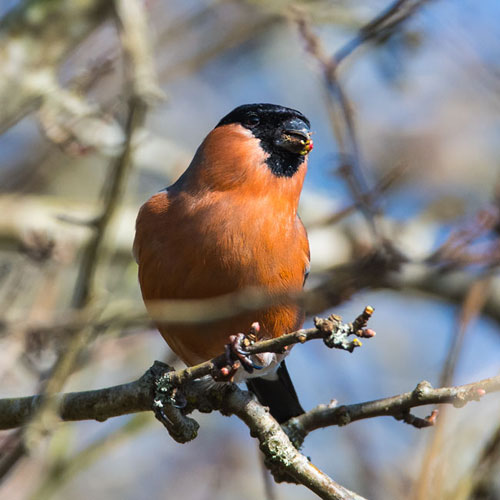 |
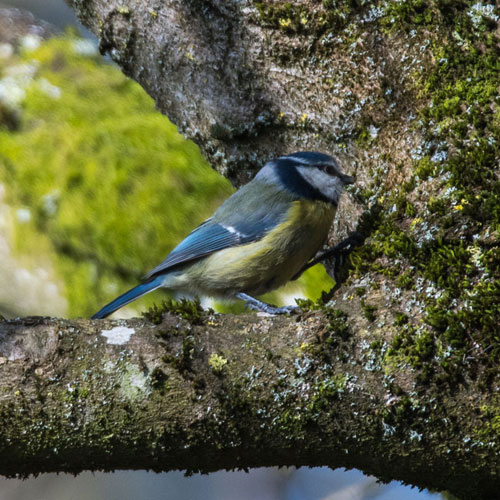 |
| Treecreeper |
Blushing Bracket |
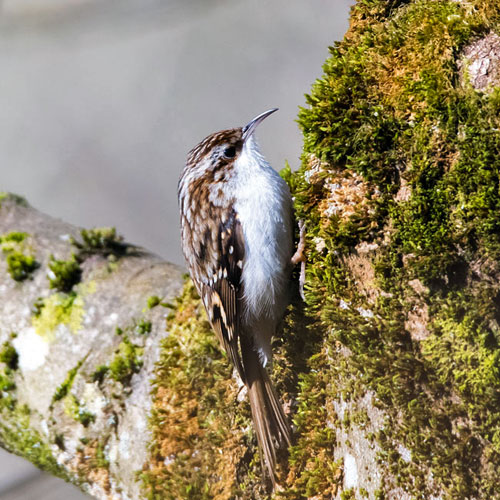 |
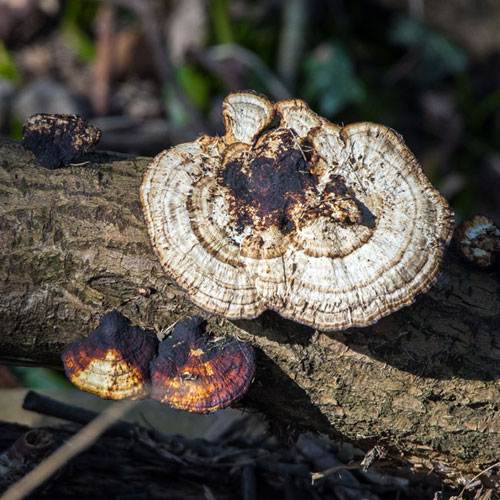 |
Friday: Strathclyde Park, Motherwell
I was pleased to see a juvenile Iceland
Gull on and around the observation tower footbridge near the
Watersports Centre. In the culvert to the south of the tower there was
a juvenile Grey Heron standing, waiting patiently for something to crop
up in the outflow. There was also a untidy looking Pied
Wagtail, probably a male juvenile.
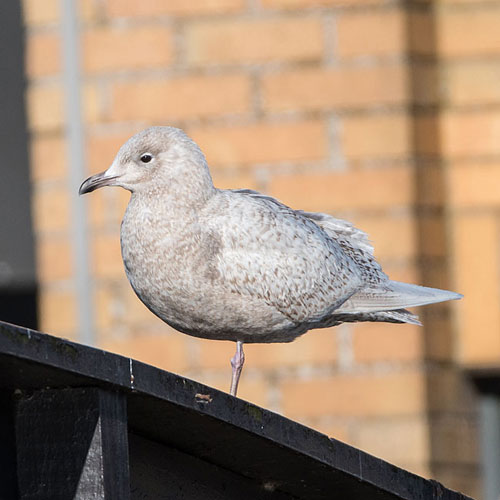 |
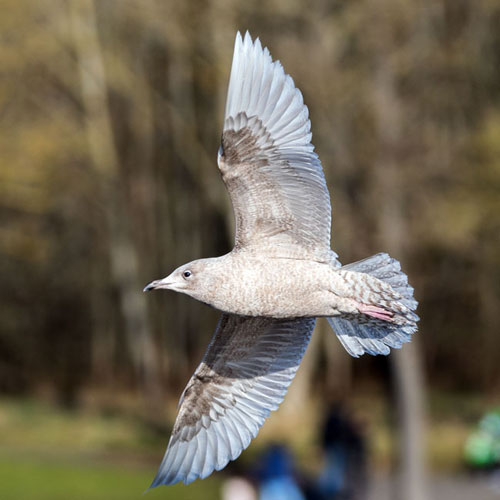 |
| Juvenile Grey Heron |
Juvenile Pied
Wagtail |
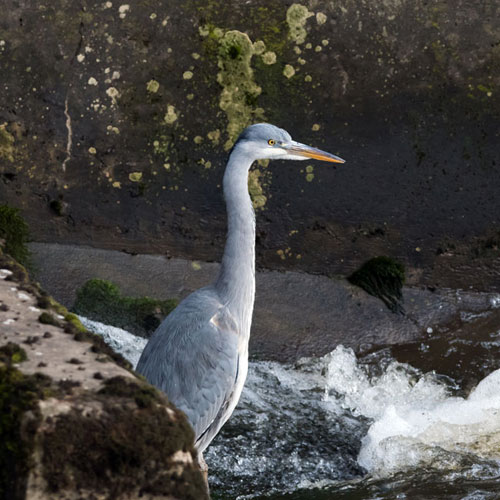 |
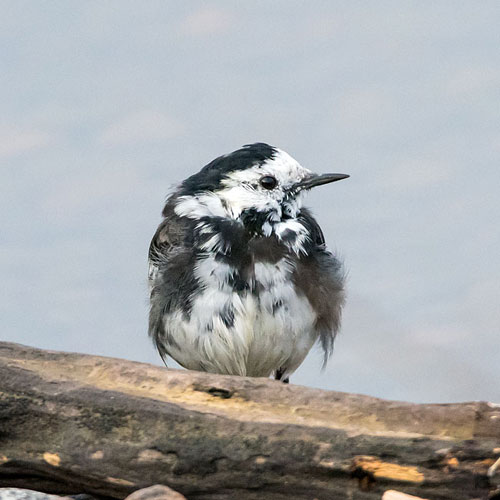 |
On the Loch I watched a dominant cobb Mute Swan worrying the younger
swans as it displayed its plumage to the onlooking pens. The Greylags
were just as busy, but noisier.
| Mute Swan |
Greylag Goose |
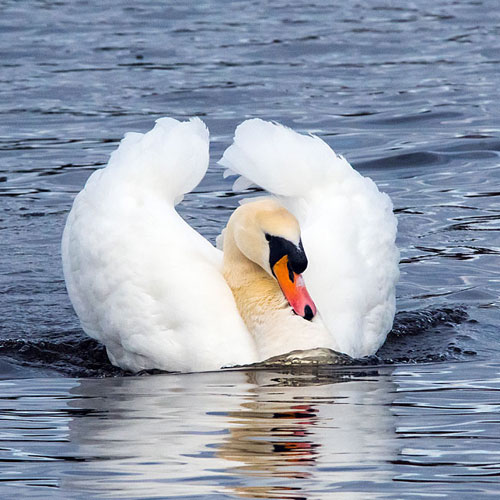 |
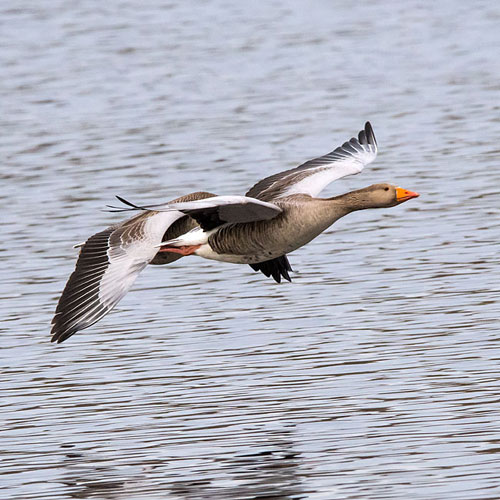 |
I often walk through car parks 2-4 looking for passerines. I managed to
observe and photograph a Goldfinch feeding on low branches and also a
singing Robin just below it In a gap between car parks a Great Tit sat
very obligingly as I snapped a few shots. I even got a long shot of
Redwing high in the branches of a tall tree.
| Goldfinch |
Robin |
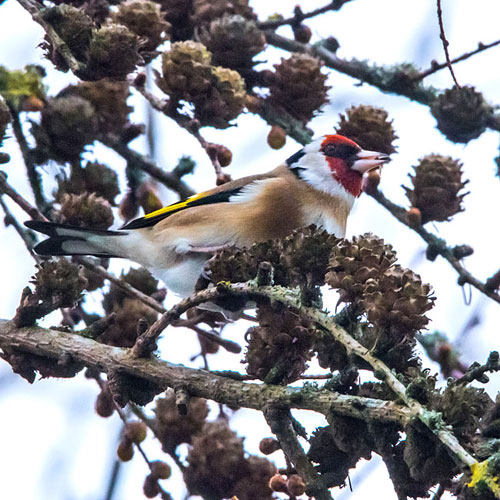 |
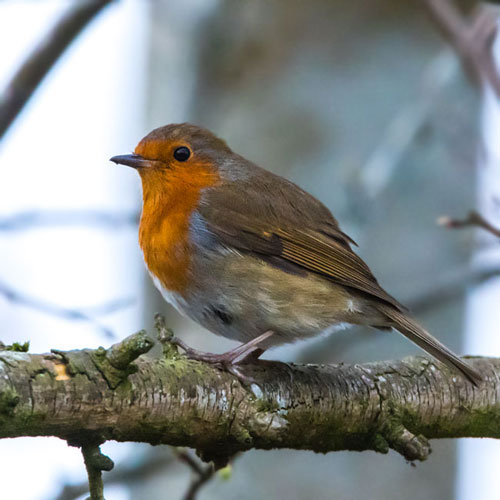 |
| Great Tit |
Redwing |
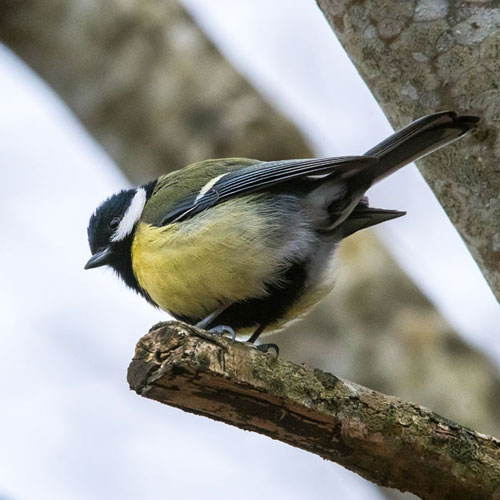 |
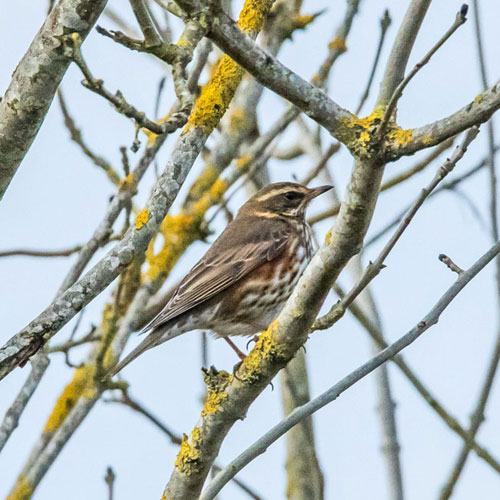 |
As I continued my walk I passed the water’s edge at car park
4 where I watched Jackdaws nipping between the large birds such as the
Canada and Swan Geese. I also managed a shot of a passing Woodpigeon
| Jackdaw |
Canada Goose |
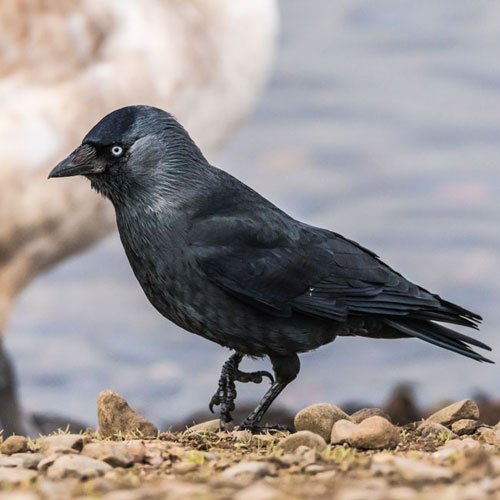 |
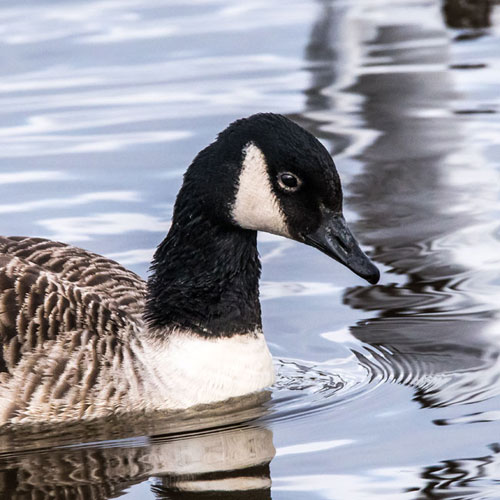 |
| Swan Goose |
Wood Pigeon |
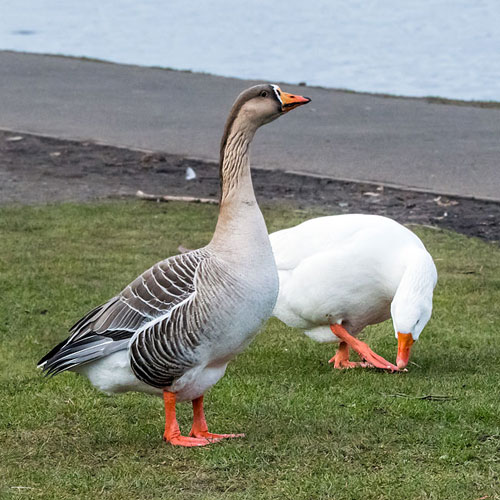 |
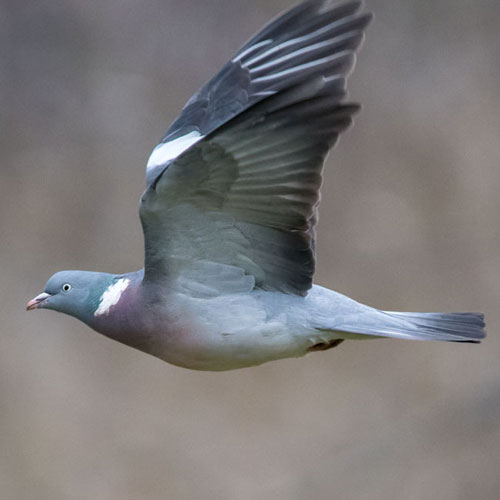 |
Tinto Hill was shining brightly to the south.
There were a few Tufted
Ducks diving near the north end of the Loch. Among
them was a female Scaup ,
identifiable by its lack of head tuft and its white patch at the base
of its bill. I also snapped a pleasing shot of a Lesser Black-backed
Gull juvenile sitting on a large red buoy. As the light faded, a
Cormorant flew past heading over the Clyde.
| Tufted duck |
Female Scaup |
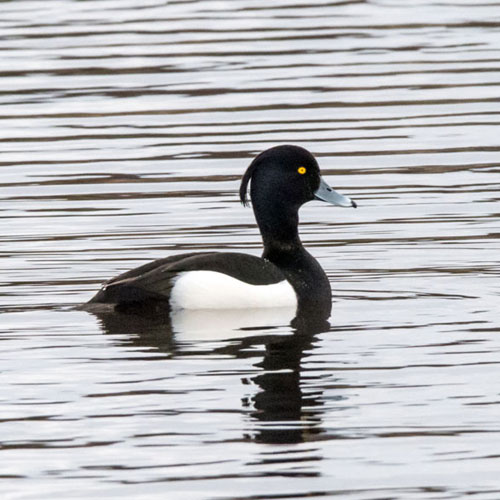 |
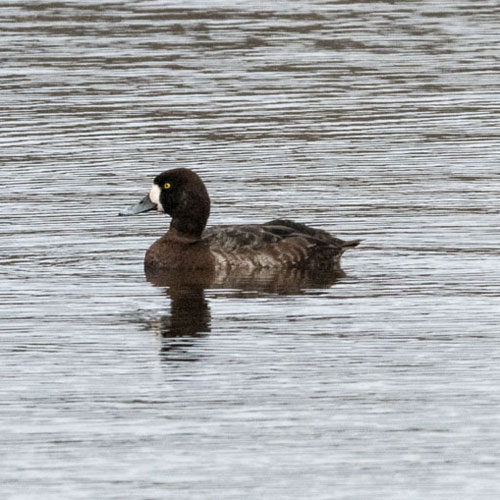 |
| 1st Cycle Lesser
Black - backed Gull |
Cormorant |
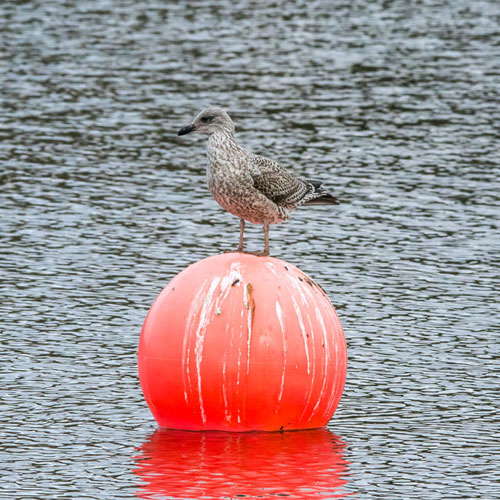 |
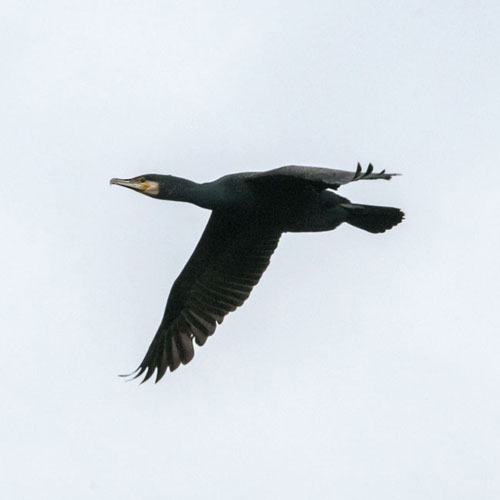 |
Saturday: RSPB Barons Haugh, Motherwell, Jim’s Garden
This brief visit to the Haugh was sadly unproductive, probably due to
the increased number of walkers and their dogs. At the Marsh Hide a
flock of Curlews
were just about visible as they stood in the mud in gloomy light.
Eventually the took off, probably making for Carbarns.
I also came across a flowering Barren
Strawberry plant and a few Teal, but that was about
it. However, on arriving home I was pleasantly surprised to see four
Buzzards circling high above my garden. One bird descended to about 40m
above the garden, allowing a reasonably good shot, considering the poor
light level.
| Barren Strawberry |
Teal |
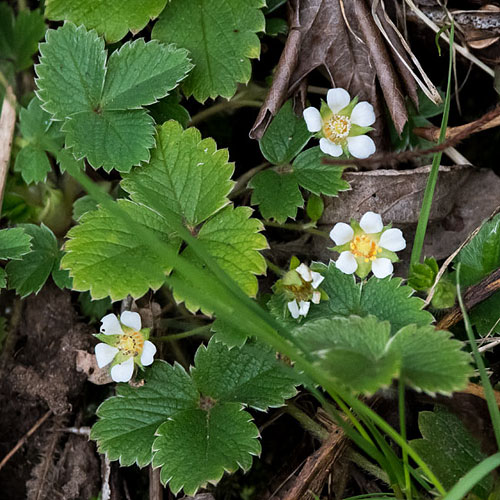 |
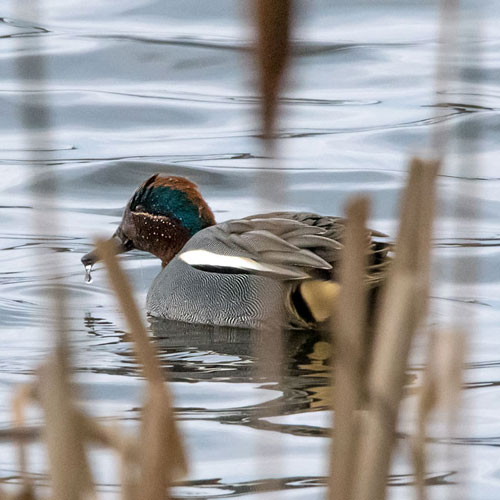 |
Highlights - March 2021
We present last month’s gallery of my favourite pictures
I’ve taken during March 2021. They are not listed in the
order they have been taken, but according to a series of loose themes.
I’ve kept commentary to a minimum, preferring to let each
picture talk for itself.
TITS & FINCHES
| Blue Tiit |
Bullfinch |
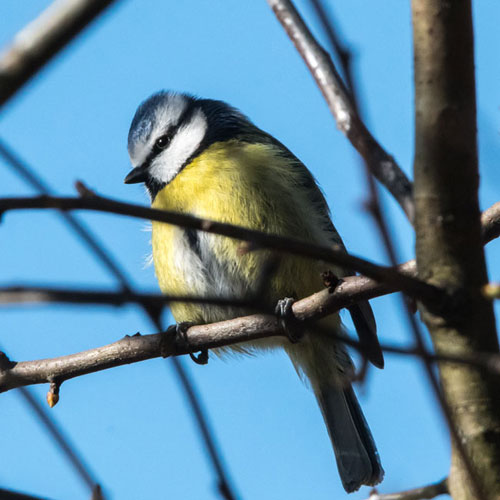 |
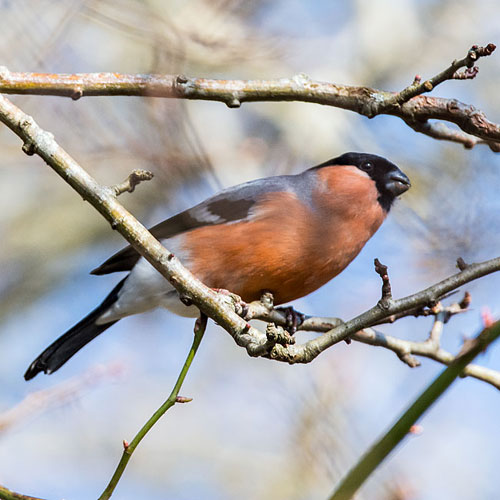 |
| Coal Tit |
Goldfinch |
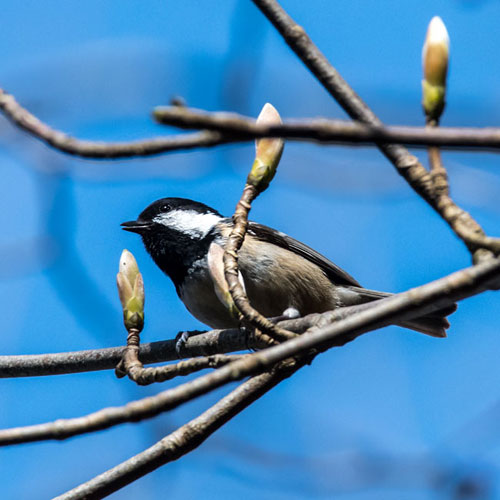 |
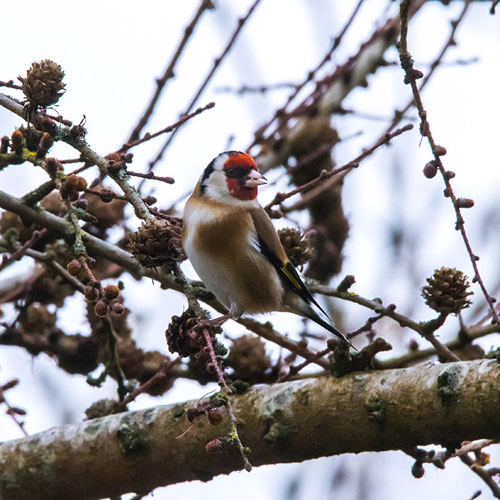 |
| Great Tit... |
|
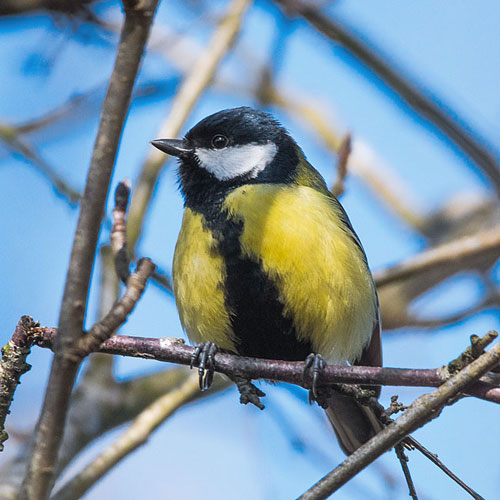 |
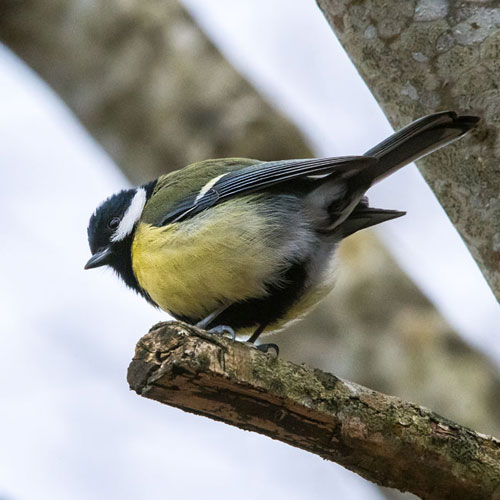 |
FLOWERS
| Butterbur |
Coltsfoot |
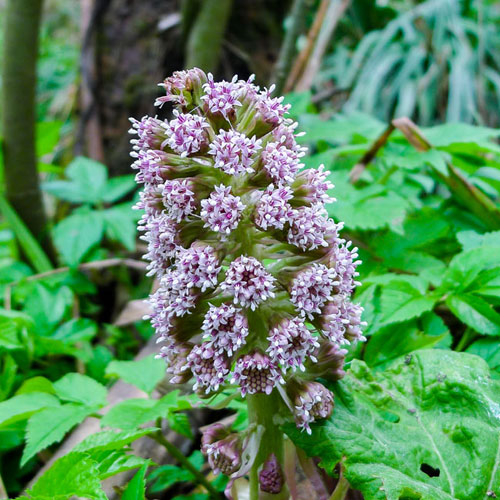 |
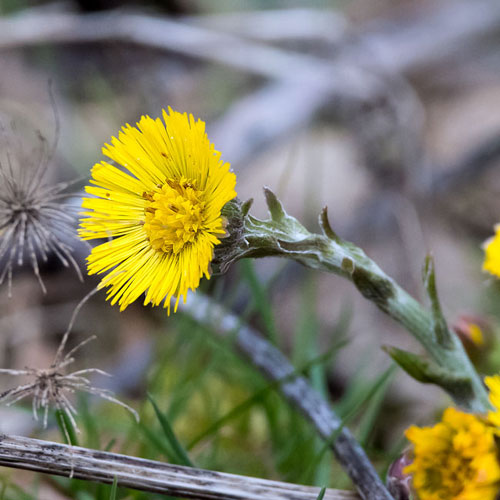 |
| Cuckoo Flower |
Gorse |
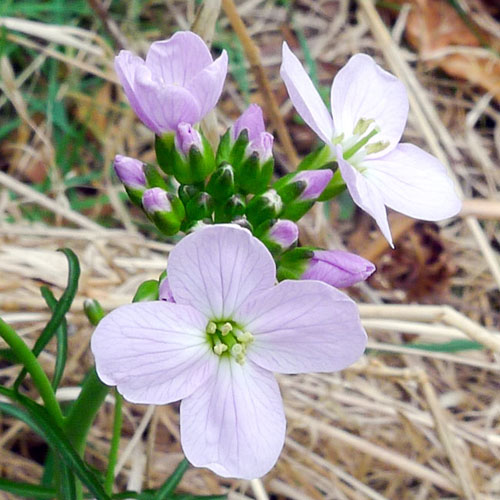 |
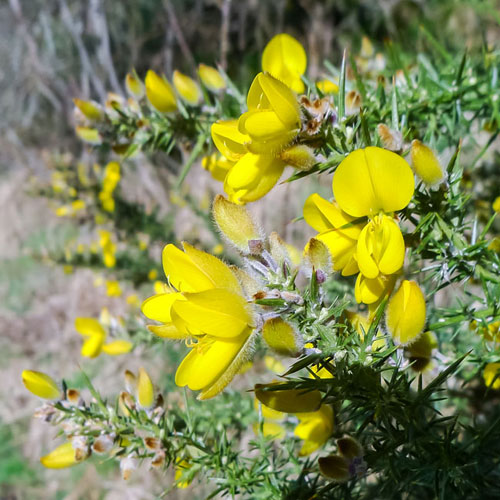 |
| Lesser Celandine |
Common Snowdrop |
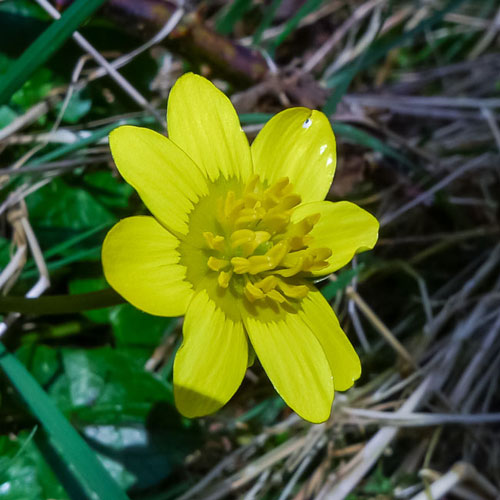 |
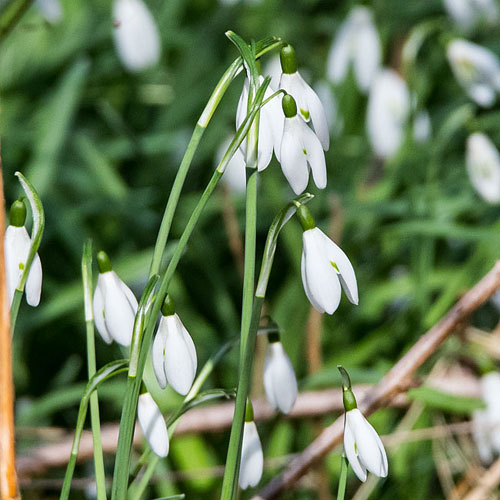 |
LITTLE BIRDS
| Goldcrest |
|
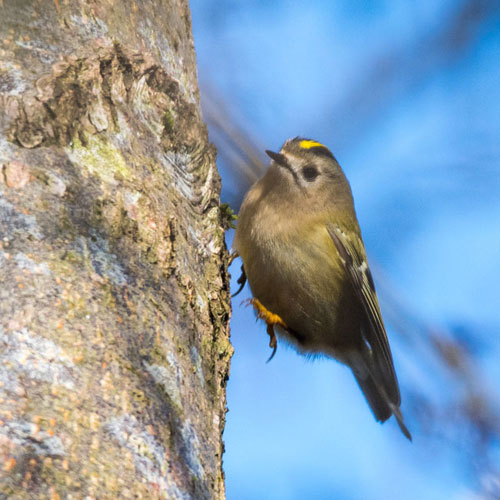 |
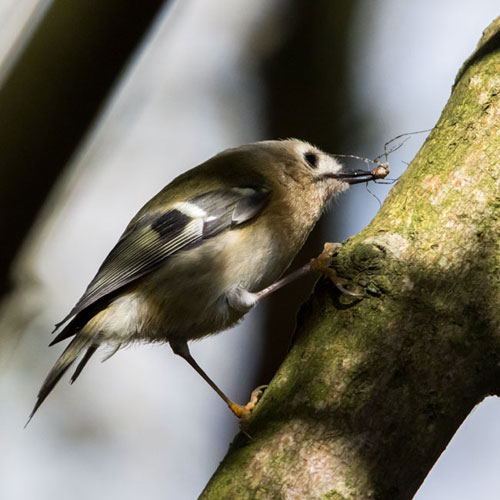 |
| Treecreeper |
Wren... |
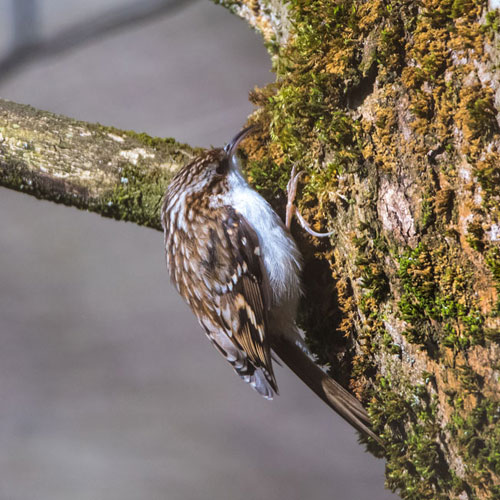 |
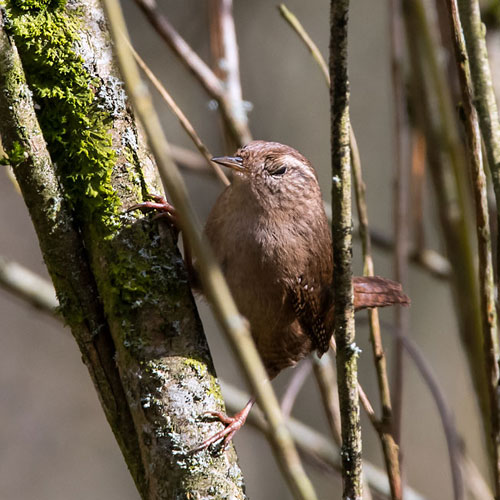 |
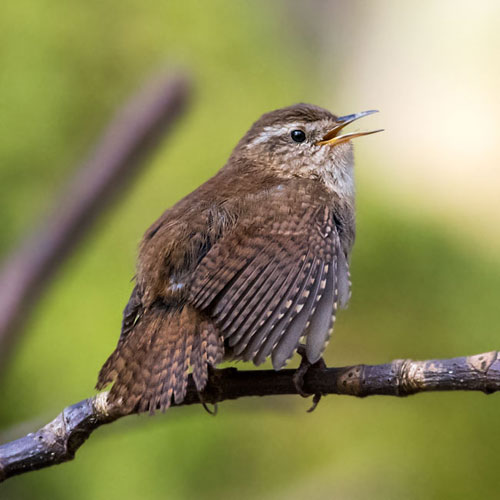 |
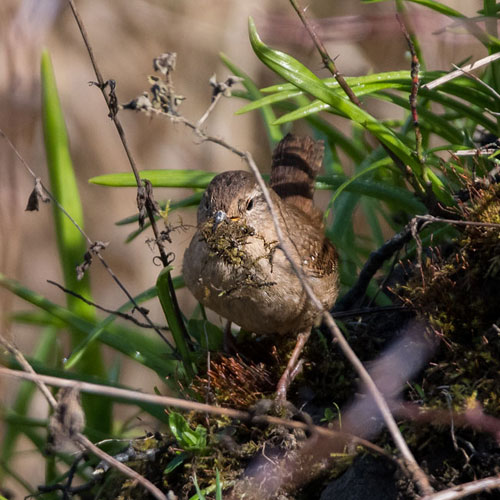 |
IN THE WATER
| Goldeneye |
Goosander |
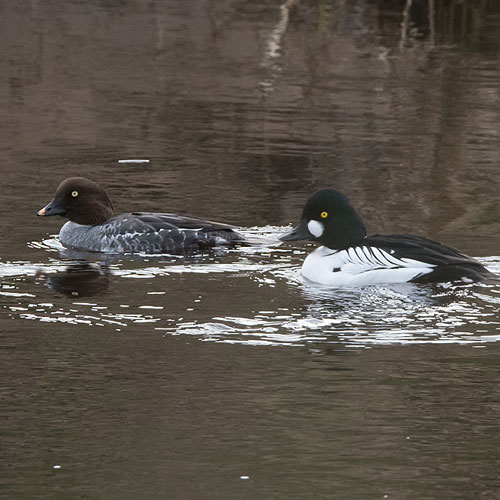 |
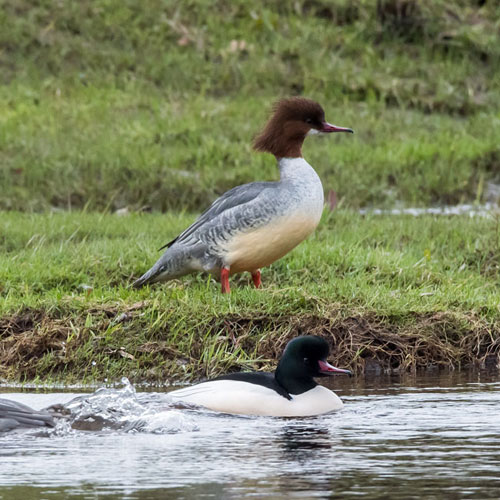 |
| Juvenile Grey Heron |
Grey Wagtail |
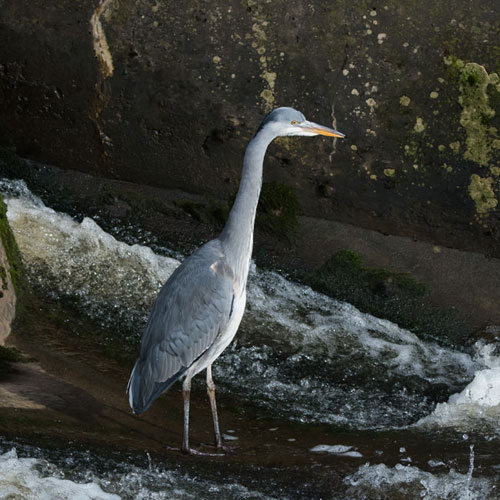 |
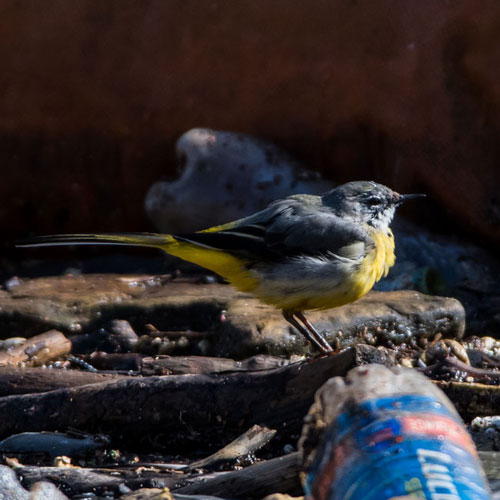 |
| Mallard |
Muscovy Duck |
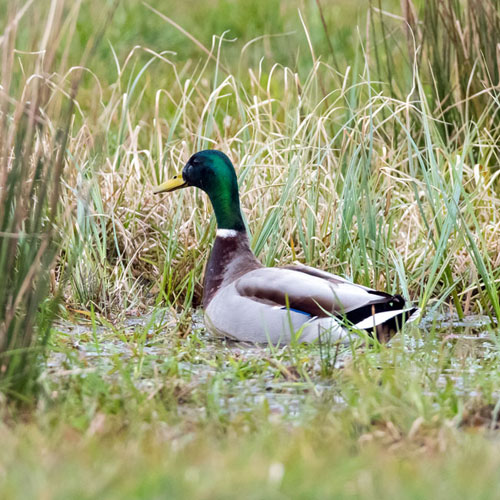 |
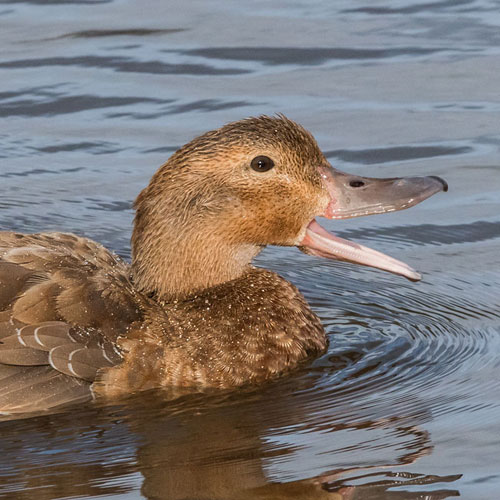 |
| Moorhen |
Mute Swan |
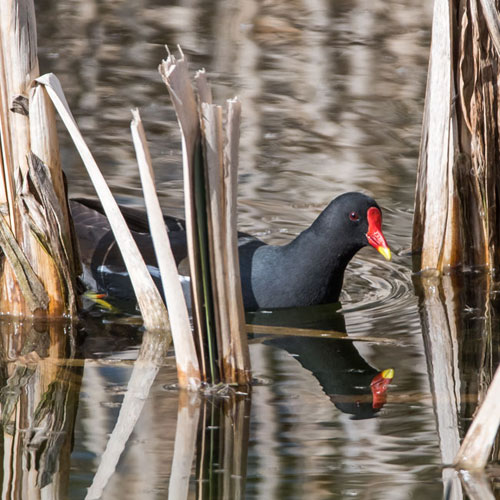 |
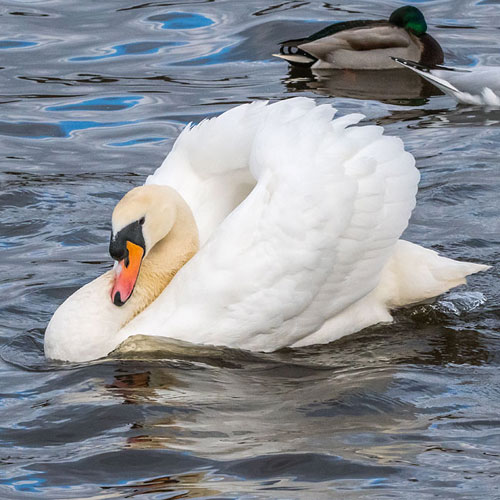 |
ROBINS
FOUR LEGS
| Common Frog |
Common Toad |
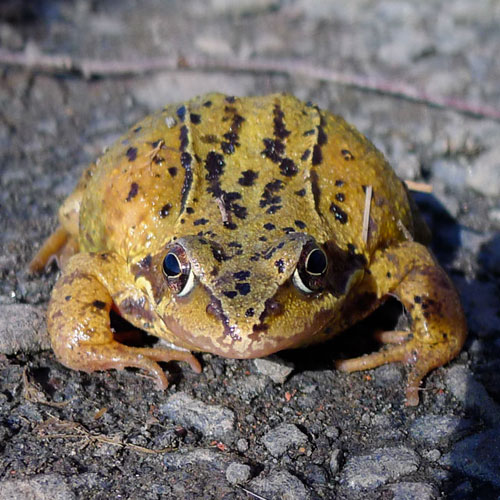 |
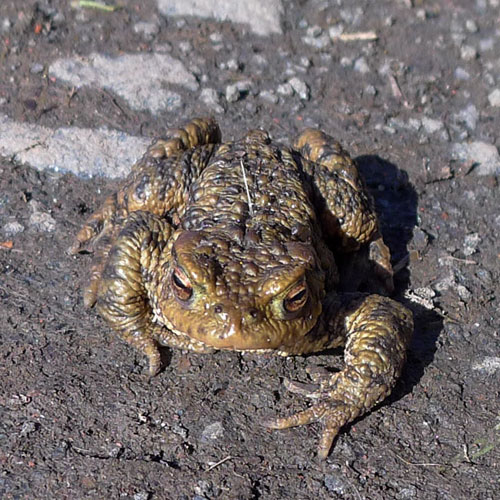 |
| Female Roe Deer... |
|
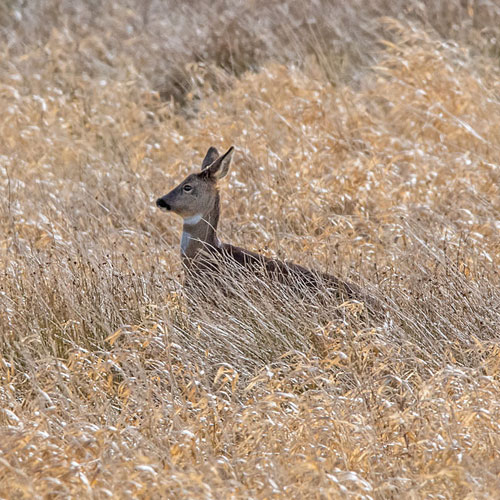 |
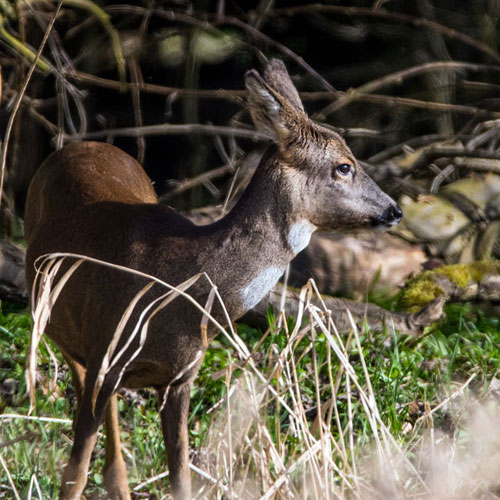 |
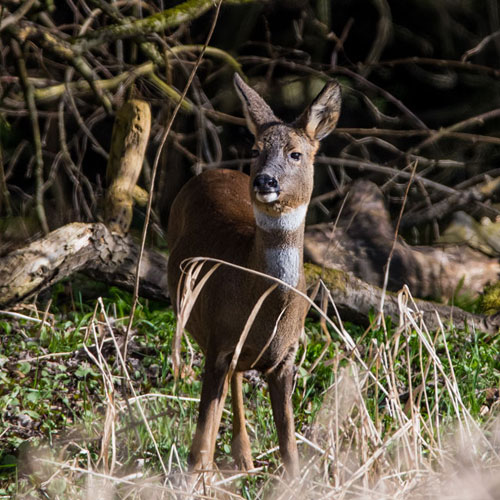 |
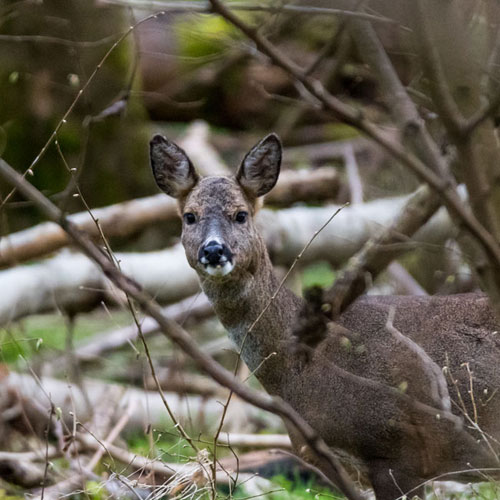 |
WINGS
| Common Gull |
Grey Heron |
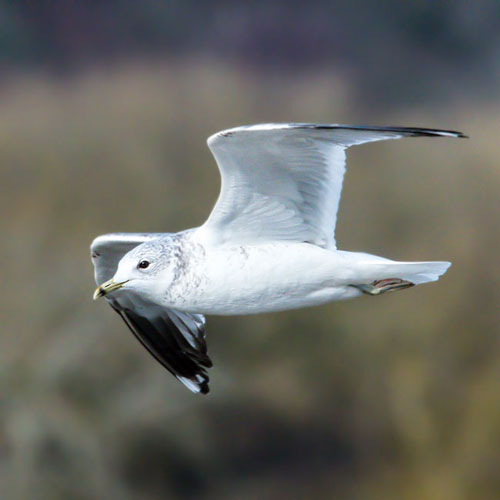 |
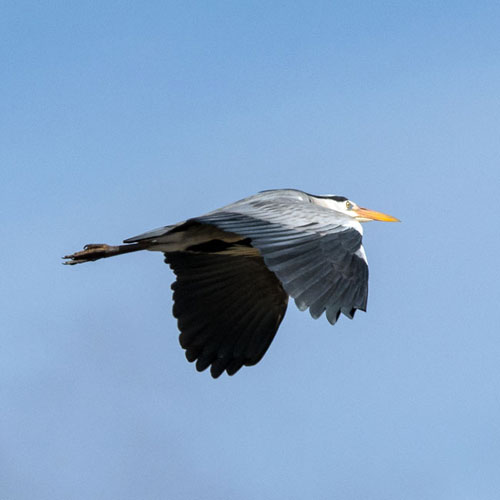 |
| Greylag Goose |
1st Cycle Iceland Gull |
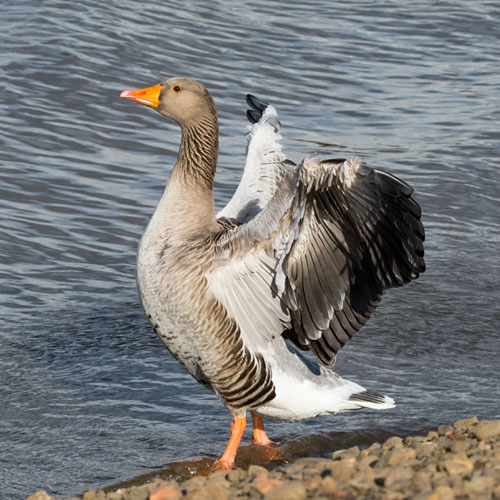 |
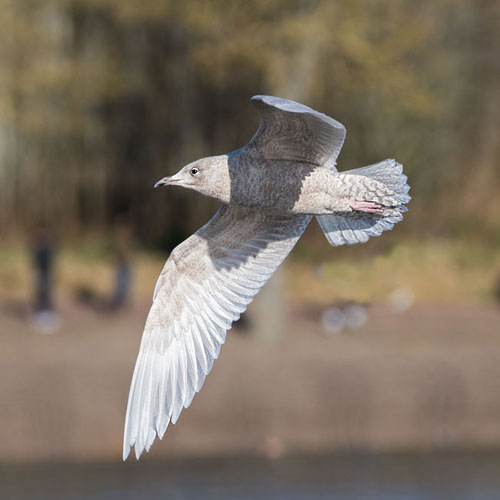 |
| Mute Swan |
|
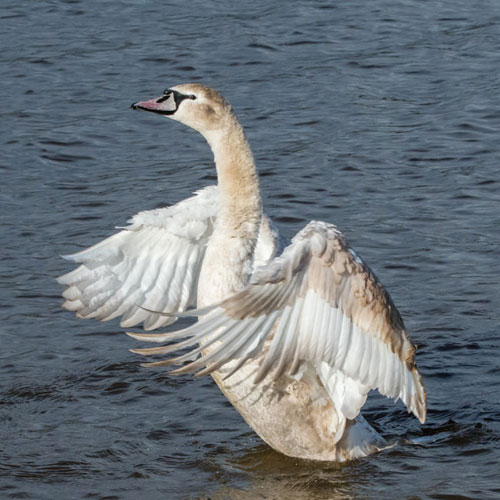 |
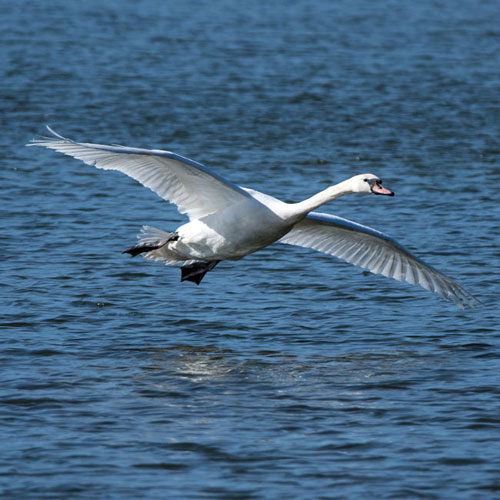 |
| Shelduck |
Small Tortoiseshell Butterfly |
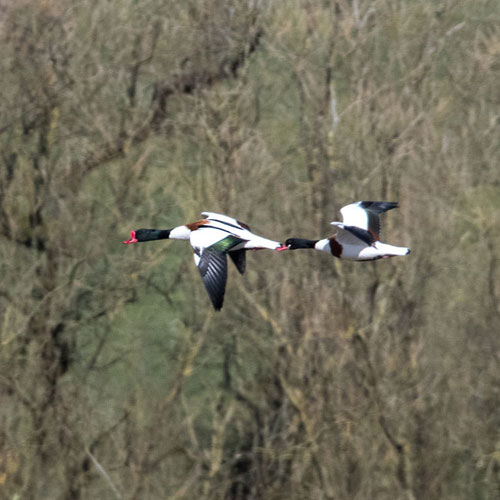 |
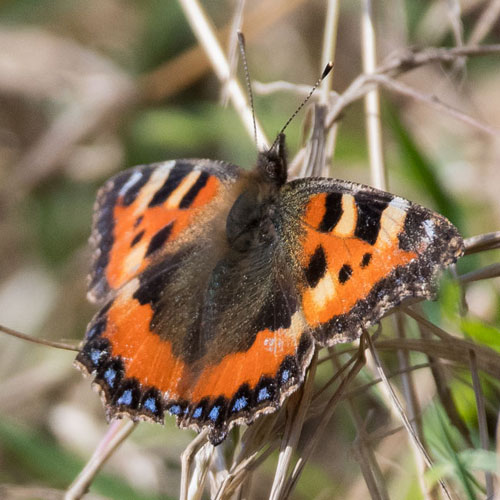 |
Back To Top
|

